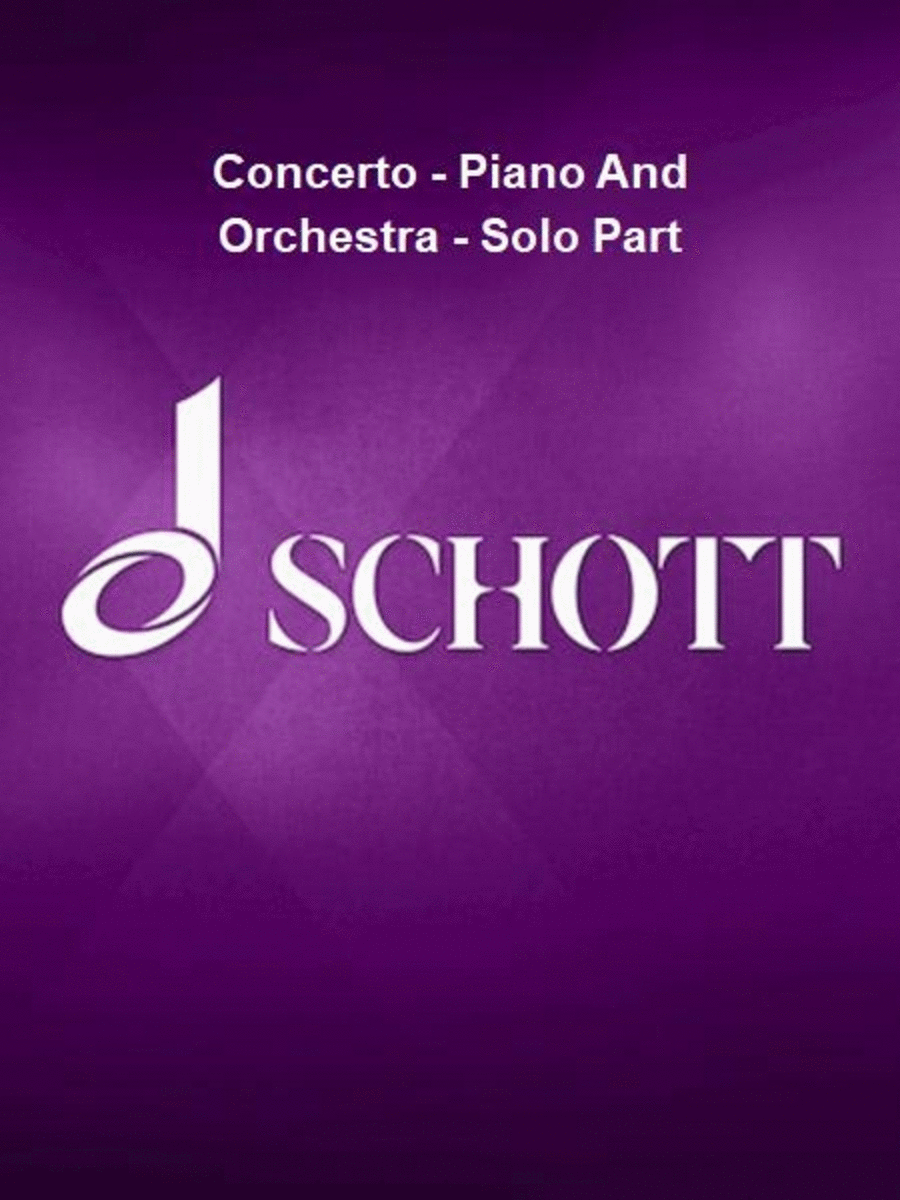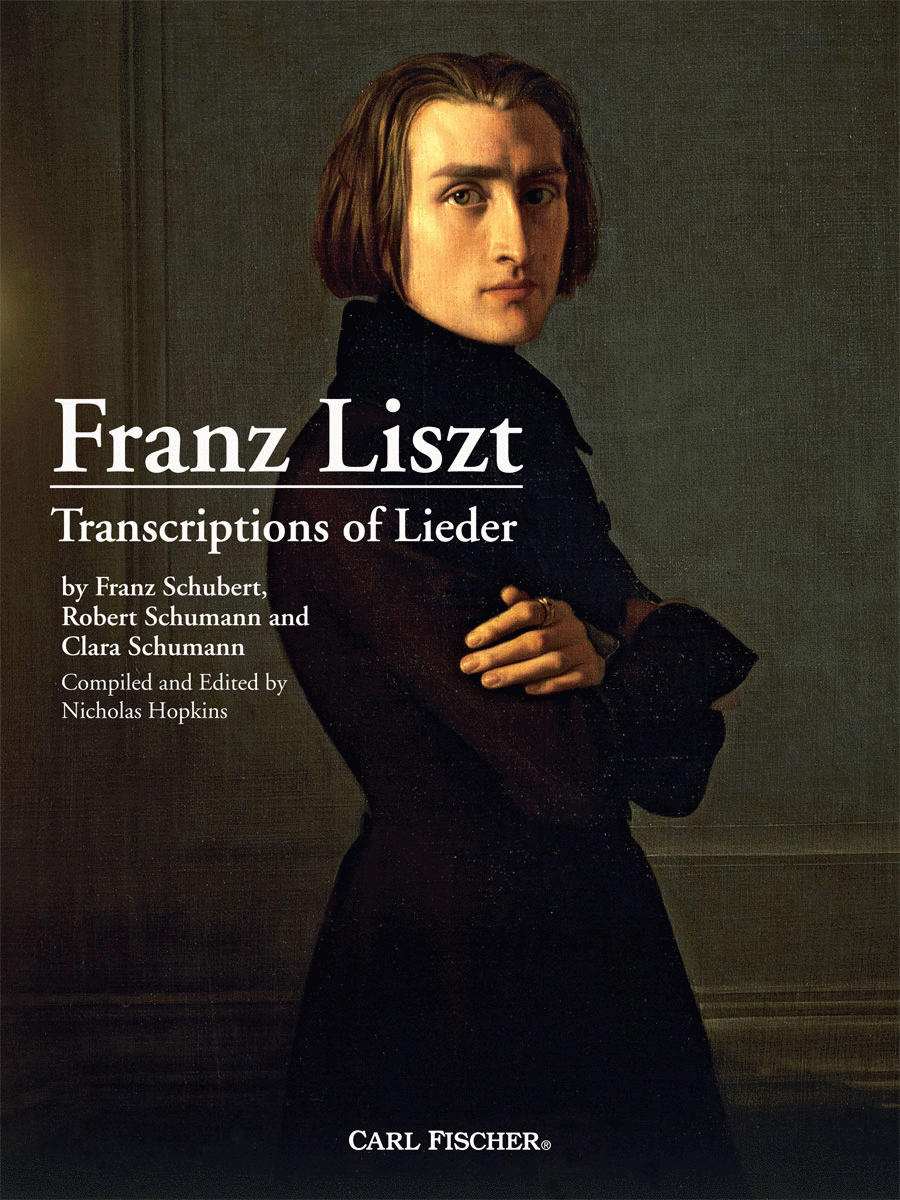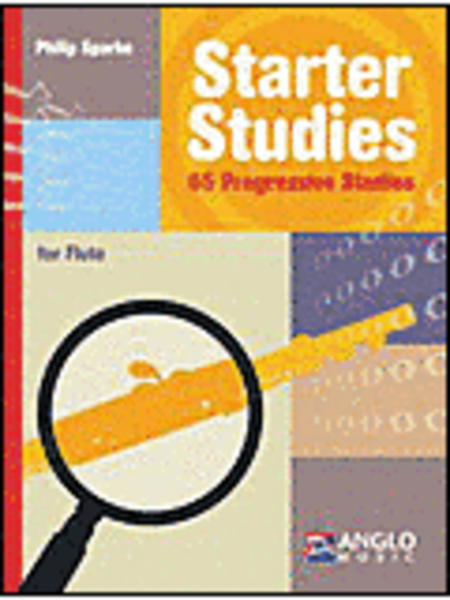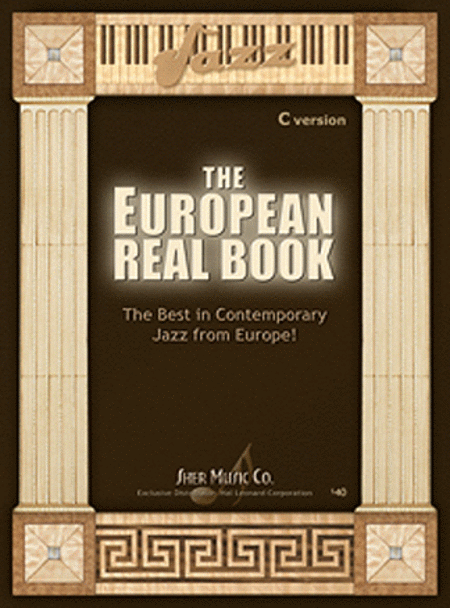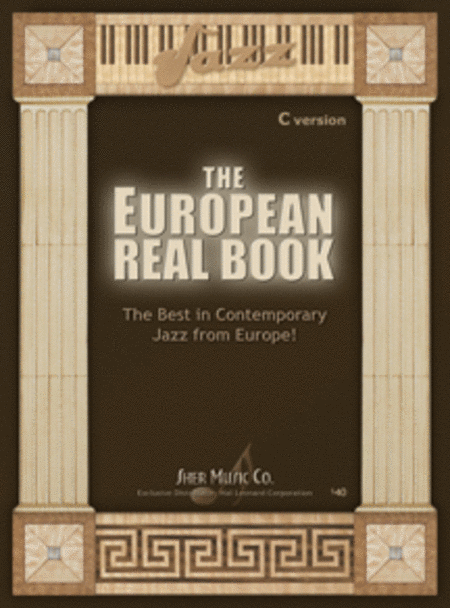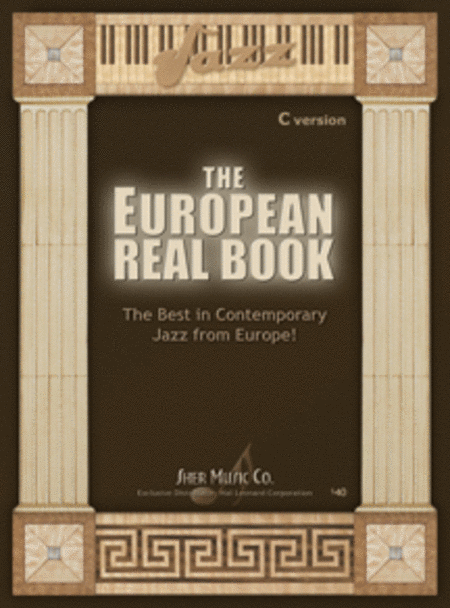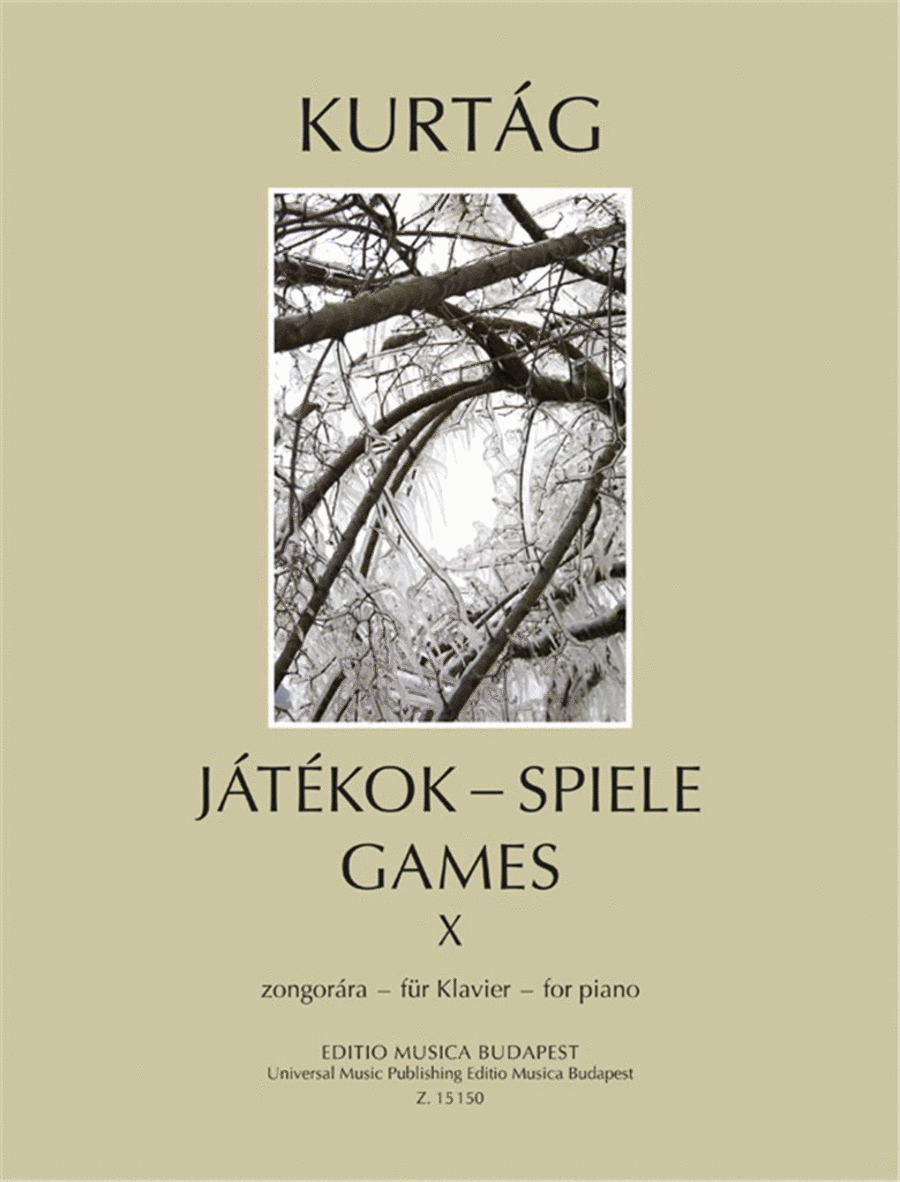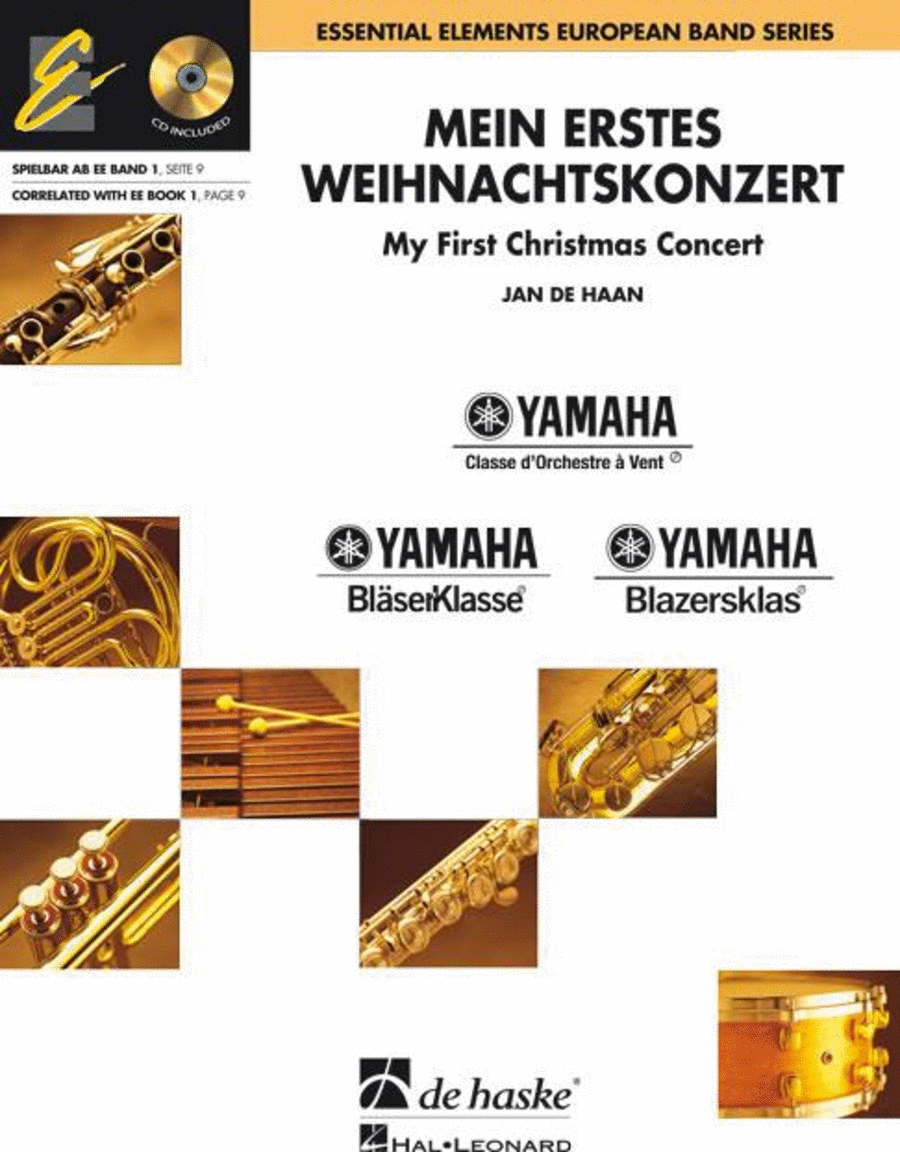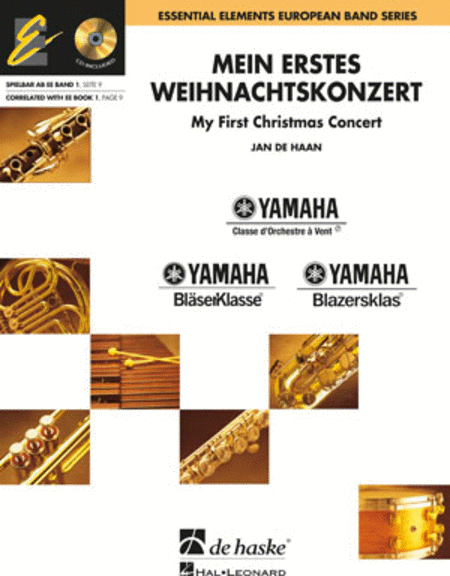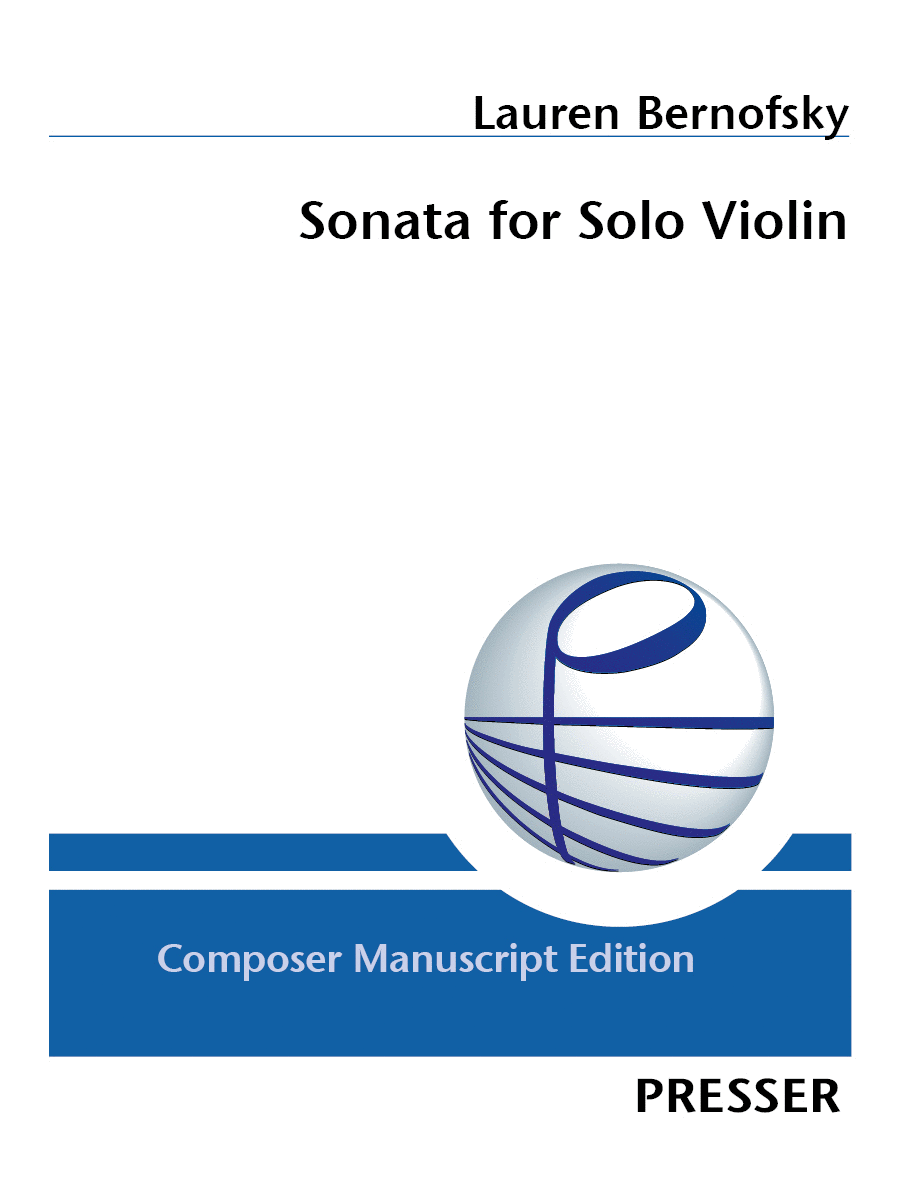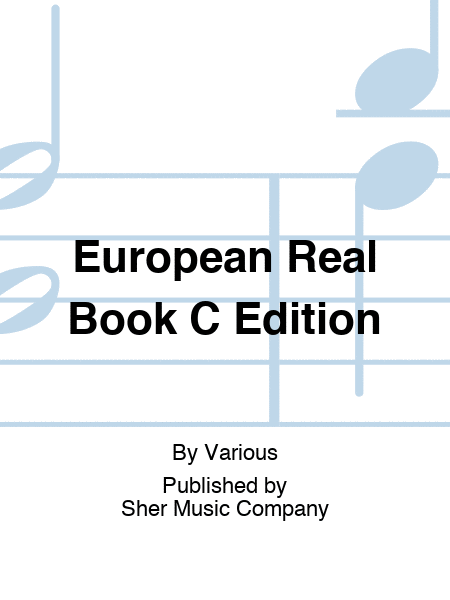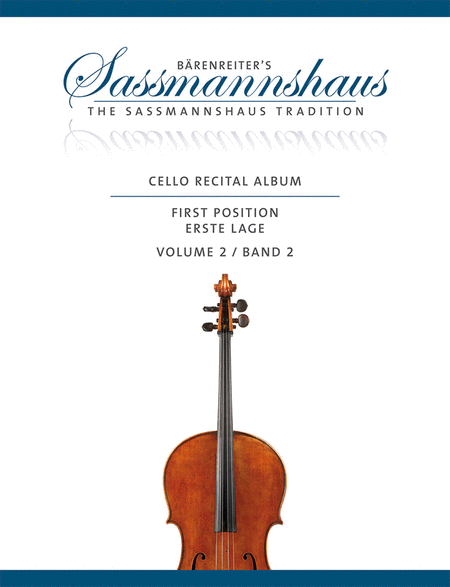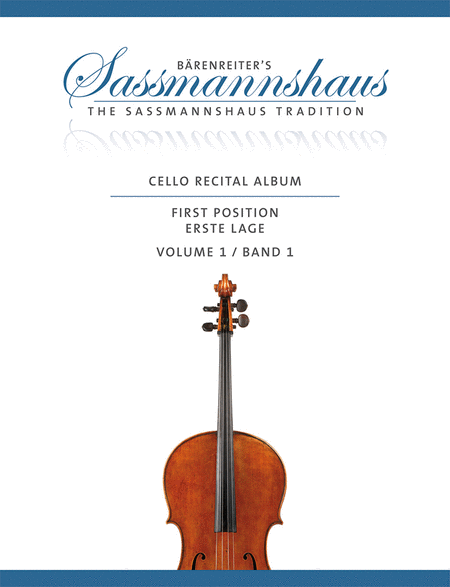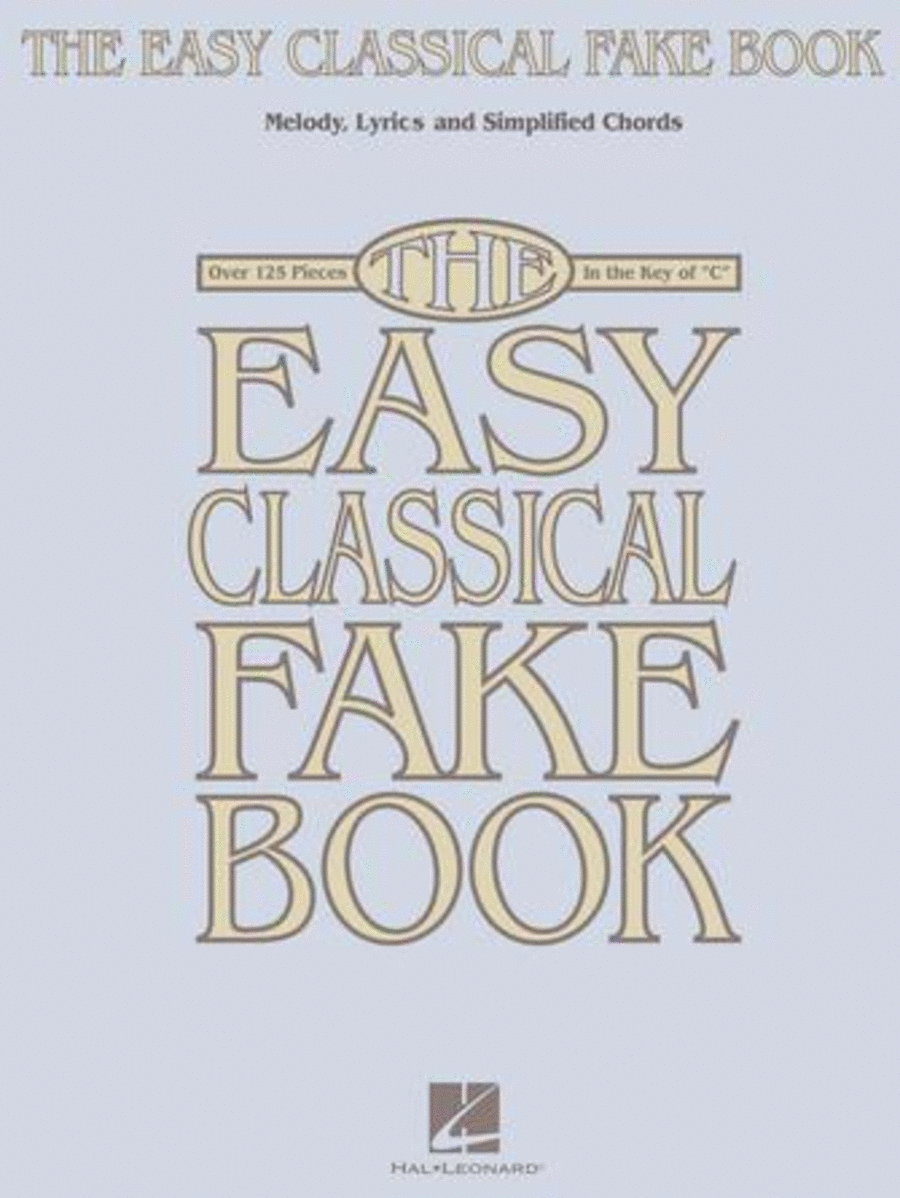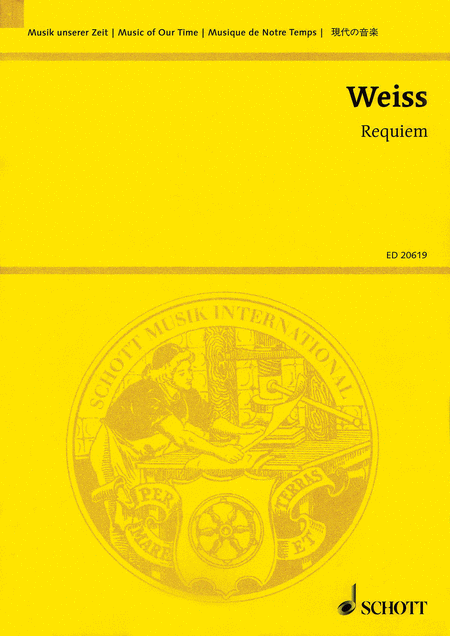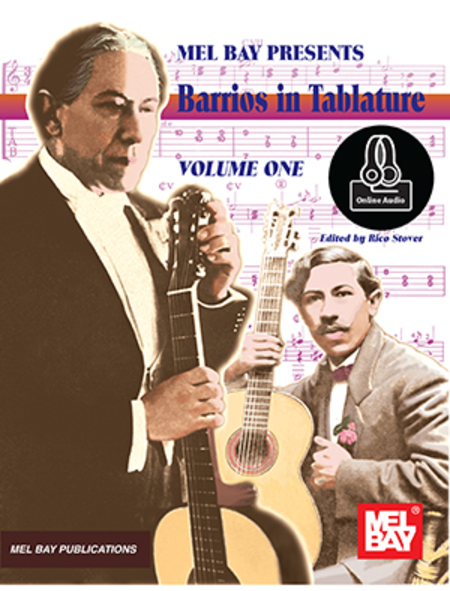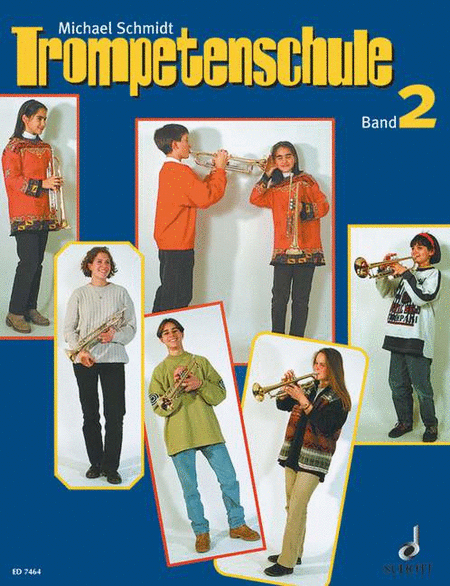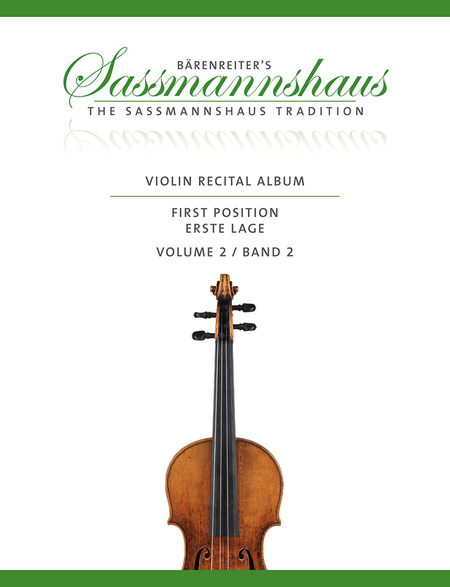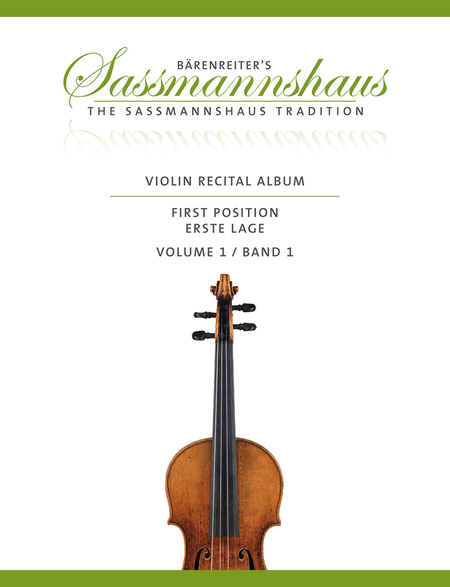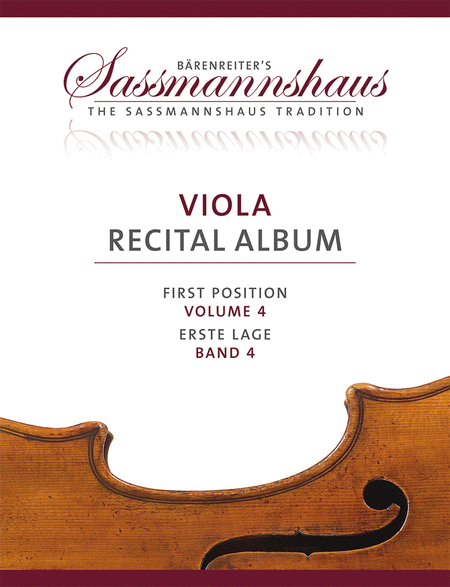|
| Concerto - Piano And Orchestra - Solo Part
Schott
Piano and orchestra - difficult SKU: HL.49046544 For piano and orchest...(+)
Piano and orchestra -
difficult SKU:
HL.49046544 For
piano and orchestra.
Composed by Gyorgy
Ligeti. This edition:
Saddle stitching. Sheet
music. Edition Schott.
Softcover. Composed
1985-1988. Duration 24'.
Schott Music #ED23178.
Published by Schott Music
(HL.49046544). ISBN
9781705122655. UPC:
842819108726.
9.0x12.0x0.224
inches. I composed
the Piano Concerto in two
stages: the first three
movements during the
years 1985-86, the next
two in 1987, the final
autograph of the last
movement was ready by
January, 1988. The
concerto is dedicated to
the American conductor
Mario di Bonaventura. The
markings of the movements
are the following: 1.
Vivace molto ritmico e
preciso 2. Lento e
deserto 3. Vivace
cantabile 4. Allegro
risoluto 5. Presto
luminoso.The first
performance of the
three-movement Concerto
was on October 23rd, 1986
in Graz. Mario di
Bonaventura conducted
while his brother,
Anthony di Bonaventura,
was the soloist. Two days
later the performance was
repeated in the Vienna
Konzerthaus. After
hearing the work twice, I
came to the conclusion
that the third movement
is not an adequate
finale; my feeling of
form demanded
continuation, a
supplement. That led to
the composing of the next
two movements. The
premiere of the whole
cycle took place on
February 29th, 1988, in
the Vienna Konzerthaus
with the same conductor
and the same pianist. The
orchestra consisted of
the following: flute,
oboe, clarinet, bassoon,
horn, trumpet, tenor
trombone, percussion and
strings. The flautist
also plays the piccoIo,
the clarinetist, the alto
ocarina. The percussion
is made up of diverse
instruments, which one
musician-virtuoso can
play. It is more
practical, however, if
two or three musicians
share the instruments.
Besides traditional
instruments the
percussion part calls
also for two simple wind
instruments: the swanee
whistle and the
harmonica. The string
instrument parts (two
violins, viola, cello and
doubles bass) can be
performed soloistic since
they do not contain
divisi. For balance,
however, the ensemble
playing is recommended,
for example 6-8 first
violins, 6-8 second, 4-6
violas, 4-6 cellos, 3-4
double basses. In the
Piano Concerto I realized
new concepts of harmony
and rhythm. The first
movement is entirely
written in bimetry:
simultaneously 12/8 and
4/4 (8/8). This relates
to the known triplet on a
doule relation and in
itself is nothing new.
Because, however, I
articulate 12 triola and
8 duola pulses, an
entangled, up till now
unheard kind of polymetry
is created. The rhythm is
additionally complicated
because of asymmetric
groupings inside two
speed layers, which means
accents are
asymmetrically
distributed. These
groups, as in the talea
technique, have a fixed,
continuously repeating
rhythmic structures of
varying lengths in speed
layers of 12/8 and 4/4.
This means that the
repeating pattern in the
12/8 level and the
pattern in the 4/4 level
do not coincide and
continuously give a
kaleidoscope of renewing
combinations. In our
perception we quickly
resign from following
particular rhythmical
successions and that what
is going on in time
appears for us as
something static,
resting. This music, if
it is played properly, in
the right tempo and with
the right accents inside
particular layers, after
a certain time 'rises, as
it were, as a plane after
taking off: the rhythmic
action, too complex to be
able to follow in detail,
begins flying. This
diffusion of individual
structures into a
different global
structure is one of my
basic compositional
concepts: from the end of
the fifties, from the
orchestral works
Apparitions and
Atmospheres I
continuously have been
looking for new ways of
resolving this basic
question. The harmony of
the first movement is
based on mixtures, hence
on the parallel leading
of voices. This technique
is used here in a rather
simple form; later in the
fourth movement it will
be considerably
developed. The second
movement (the only slow
one amongst five
movements) also has a
talea type of structure,
it is however much
simpler rhythmically,
because it contains only
one speed layer. The
melody is consisted in
the development of a
rigorous interval mode in
which two minor seconds
and one major second
alternate therefore nine
notes inside an octave.
This mode is transposed
into different degrees
and it also determines
the harmony of the
movement; however, in
closing episode in the
piano part there is a
combination of diatonics
(white keys) and
pentatonics (black keys)
led in brilliant,
sparkling quasimixtures,
while the orchestra
continues to play in the
nine tone mode. In this
movement I used isolated
sounds and extreme
registers (piccolo in a
very low register,
bassoon in a very high
register, canons played
by the swanee whistle,
the alto ocarina and
brass with a harmon-mute'
damper, cutting sound
combinations of the
piccolo, clarinet and
oboe in an extremely high
register, also
alternating of a
whistle-siren and
xylophone). The third
movement also has one
speed layer and because
of this it appears as
simpler than the first,
but actually the rhythm
is very complicated in a
different way here. Above
the uninterrupted, fast
and regular basic pulse,
thanks to the asymmetric
distribution of accents,
different types of
hemiolas and inherent
melodical patterns appear
(the term was coined by
Gerhard Kubik in relation
to central African
music). If this movement
is played with the
adequate speed and with
very clear accentuation,
illusory
rhythmic-melodical
figures appear. These
figures are not played
directly; they do not
appear in the score, but
exist only in our
perception as a result of
co-operation of different
voices. Already earlier I
had experimented with
illusory rhythmics,
namely in Poeme
symphonique for 100
metronomes (1962), in
Continuum for harpsichord
(1968), in Monument for
two pianos (1976), and
especially in the first
and sixth piano etude
Desordre and Automne a
Varsovie (1985). The
third movement of the
Piano Concerto is up to
now the clearest example
of illusory rhythmics and
illusory melody. In
intervallic and chordal
structure this movement
is based on alternation,
and also inter-relation
of various modal and
quasi-equidistant harmony
spaces. The tempered
twelve-part division of
the octave allows for
diatonical and other
modal interval
successions, which are
not equidistant, but are
based on the alternation
of major and minor
seconds in different
groups. The tempered
system also allows for
the use of the
anhemitonic pentatonic
scale (the black keys of
the piano). From
equidistant scales,
therefore interval
formations which are
based on the division of
an octave in equal
distances, the
twelve-tone tempered
system allows only
chromatics (only minor
seconds) and the six-tone
scale (the whole-tone:
only major seconds).
Moreover, the division of
the octave into four
parts only minor thirds)
and three parts (three
major thirds) is
possible. In several
music cultures different
equidistant divisions of
an octave are accepted,
for example, in the
Javanese slendro into
five parts, in Melanesia
into seven parts, popular
also in southeastern
Asia, and apart from
this, in southern Africa.
This does not mean an
exact equidistance: there
is a certain tolerance
for the inaccurateness of
the interval tuning.
These exotic for us,
Europeans, harmony and
melody have attracted me
for several years.
However I did not want to
re-tune the piano
(microtone deviations
appear in the concerto
only in a few places in
the horn and trombone
parts led in natural
tones). After the period
of experimenting, I got
to pseudo- or
quasiequidistant
intervals, which is
neither whole-tone nor
chromatic: in the
twelve-tone system, two
whole-tone scales are
possible, shifted a minor
second apart from each
other. Therefore, I
connect these two scales
(or sound resources), and
for example, places occur
where the melodies and
figurations in the piano
part are created from
both whole tone scales;
in one band one six-tone
sound resource is
utilized, and in the
other hand, the
complementary. In this
way whole-tonality and
chromaticism mutually
reduce themselves: a type
of deformed
equidistancism is formed,
strangely brilliant and
at the same time
slanting; illusory
harmony, indeed being
created inside the
tempered twelve-tone
system, but in sound
quality not belonging to
it anymore. The
appearance of such
slantedequidistant
harmony fields
alternating with modal
fields and based on
chords built on fifths
(mainly in the piano
part), complemented with
mixtures built on fifths
in the orchestra, gives
this movement an
individual, soft-metallic
colour (a metallic sound
resulting from
harmonics). The fourth
movement was meant to be
the central movement of
the Concerto. Its
melodc-rhythmic elements
(embryos or fragments of
motives) in themselves
are simple. The movement
also begins simply, with
a succession of
overlapping of these
elements in the mixture
type structures. Also
here a kaleidoscope is
created, due to a limited
number of these elements
- of these pebbles in the
kaleidoscope - which
continuously return in
augmentations and
diminutions. Step by
step, however, so that in
the beginning we cannot
hear it, a compiled
rhythmic organization of
the talea type gradually
comes into daylight,
based on the simultaneity
of two mutually shifted
to each other speed
layers (also triplet and
duoles, however, with
different asymmetric
structures than in the
first movement). While
longer rests are
gradually filled in with
motive fragments, we
slowly come to the
conclusion that we have
found ourselves inside a
rhythmic-melodical whirl:
without change in tempo,
only through increasing
the density of the
musical events, a
rotation is created in
the stream of successive
and compiled, augmented
and diminished motive
fragments, and increasing
the density suggests
acceleration. Thanks to
the periodical structure
of the composition,
always new but however of
the same (all the motivic
cells are similar to
earlier ones but none of
them are exactly
repeated; the general
structure is therefore
self-similar), an
impression is created of
a gigantic, indissoluble
network. Also, rhythmic
structures at first
hidden gradually begin to
emerge, two independent
speed layers with their
various internal
accentuations. This
great, self-similar whirl
in a very indirect way
relates to musical
associations, which came
to my mind while watching
the graphic projection of
the mathematical sets of
Julia and of Mandelbrot
made with the help of a
computer. I saw these
wonderful pictures of
fractal creations, made
by scientists from Brema,
Peitgen and Richter, for
the first time in 1984.
From that time they have
played a great role in my
musical concepts. This
does not mean, however,
that composing the fourth
movement I used
mathematical methods or
iterative calculus;
indeed, I did use
constructions which,
however, are not based on
mathematical thinking,
but are rather craftman's
constructions (in this
respect, my attitude
towards mathematics is
similar to that of the
graphic artist Maurits
Escher). I am concerned
rather with intuitional,
poetic, synesthetic
correspondence, not on
the scientific, but on
the poetic level of
thinking. The fifth, very
short Presto movement is
harmonically very simple,
but all the more
complicated in its
rhythmic structure: it is
based on the further
development of ''inherent
patterns of the third
movement. The
quasi-equidistance system
dominates harmonically
and melodically in this
movement, as in the
third, alternating with
harmonic fields, which
are based on the division
of the chromatic whole
into diatonics and
anhemitonic pentatonics.
Polyrhythms and harmonic
mixtures reach their
greatest density, and at
the same time this
movement is strikingly
light, enlightened with
very bright colours: at
first it seems chaotic,
but after listening to it
for a few times it is
easy to grasp its
content: many autonomous
but self-similar figures
which crossing
themselves. I present my
artistic credo in the
Piano Concerto: I
demonstrate my
independence from
criteria of the
traditional avantgarde,
as well as the
fashionable
postmodernism. Musical
illusions which I
consider to be also so
important are not a goal
in itself for me, but a
foundation for my
aesthetical attitude. I
prefer musical forms
which have a more
object-like than
processual character.
Music as frozen time, as
an object in imaginary
space evoked by music in
our imagination, as a
creation which really
develops in time, but in
imagination it exists
simultaneously in all its
moments. The spell of
time, the enduring its
passing by, closing it in
a moment of the present
is my main intention as a
composer. (Gyorgy
Ligeti). $34.00 - Voir plus => AcheterDélais: 24 hours - In Stock | | | |
| Transcriptions of Lieder
Piano seul
Carl Fischer
Chamber Music Piano SKU: CF.PL1056 Composed by Clara Wieck-Schumann, Fran...(+)
Chamber Music Piano
SKU: CF.PL1056
Composed by Clara
Wieck-Schumann, Franz
Schubert, and Robert
Schumann. Edited by
Nicholas Hopkins.
Collection. With Standard
notation. 128 pages. Carl
Fischer Music #PL1056.
Published by Carl Fischer
Music (CF.PL1056).
ISBN 9781491153390.
UPC: 680160910892.
Transcribed by Franz
Liszt. Introduction
It is true that Schubert
himself is somewhat to
blame for the very
unsatisfactory manner in
which his admirable piano
pieces are treated. He
was too immoderately
productive, wrote
incessantly, mixing
insignificant with
important things, grand
things with mediocre
work, paid no heed to
criticism, and always
soared on his wings. Like
a bird in the air, he
lived in music and sang
in angelic fashion.
--Franz Liszt, letter to
Dr. S. Lebert (1868) Of
those compositions that
greatly interest me,
there are only Chopin's
and yours. --Franz Liszt,
letter to Robert Schumann
(1838) She [Clara
Schumann] was astounded
at hearing me. Her
compositions are really
very remarkable,
especially for a woman.
There is a hundred times
more creativity and real
feeling in them than in
all the past and present
fantasias by Thalberg.
--Franz Liszt, letter to
Marie d'Agoult (1838)
Chretien Urhan
(1790-1845) was a
Belgian-born violinist,
organist and composer who
flourished in the musical
life of Paris in the
early nineteenth century.
According to various
accounts, he was deeply
religious, harshly
ascetic and wildly
eccentric, though revered
by many important and
influential members of
the Parisian musical
community. Regrettably,
history has forgotten
Urhan's many musical
achievements, the most
important of which was
arguably his pioneering
work in promoting the
music of Franz Schubert.
He devoted much of his
energies to championing
Schubert's music, which
at the time was unknown
outside of Vienna.
Undoubtedly, Urhan was
responsible for
stimulating this
enthusiasm in Franz
Liszt; Liszt regularly
heard Urhan's organ
playing in the
St.-Vincent-de-Paul
church in Paris, and the
two became personal
acquaintances. At
eighteen years of age,
Liszt was on the verge of
establishing himself as
the foremost pianist in
Europe, and this
awakening to Schubert's
music would prove to be a
profound experience.
Liszt's first travels
outside of his native
provincial Hungary were
to Vienna in 1821-1823,
where his father enrolled
him in studies with Carl
Czerny (piano) and
Antonio Salieri (music
theory). Both men had
important involvements
with Schubert; Czerny
(like Urhan) as performer
and advocate of
Schubert's music and
Salieri as his theory and
composition teacher from
1813-1817. Curiously,
Liszt and Schubert never
met personally, despite
their geographical
proximity in Vienna
during these years.
Inevitably, legends later
arose that the two had
been personal
acquaintances, although
Liszt would dismiss these
as fallacious: I never
knew Schubert personally,
he was once quoted as
saying. Liszt's initial
exposure to Schubert's
music was the Lieder,
what Urhan prized most of
all. He accompanied the
tenor Benedict
Randhartinger in numerous
performances of
Schubert's Lieder and
then, perhaps realizing
that he could benefit the
composer more on his own
terms, transcribed a
number of the Lieder for
piano solo. Many of these
transcriptions he would
perform himself on
concert tour during the
so-called Glanzzeit, or
time of splendor from
1839-1847. This publicity
did much to promote
reception of Schubert's
music throughout Europe.
Once Liszt retired from
the concert stage and
settled in Weimar as a
conductor in the 1840s,
he continued to perform
Schubert's orchestral
music, his Symphony No. 9
being a particular
favorite, and is credited
with giving the world
premiere performance of
Schubert's opera Alfonso
und Estrella in 1854. At
this time, he
contemplated writing a
biography of the
composer, which
regrettably remained
uncompleted. Liszt's
devotion to Schubert
would never waver.
Liszt's relationship with
Robert and Clara Schumann
was far different and far
more complicated; by
contrast, they were all
personal acquaintances.
What began as a
relationship of mutual
respect and admiration
soon deteriorated into
one of jealousy and
hostility, particularly
on the Schumann's part.
Liszt's initial contact
with Robert's music
happened long before they
had met personally, when
Liszt published an
analysis of Schumann's
piano music for the
Gazette musicale in 1837,
a gesture that earned
Robert's deep
appreciation. In the
following year Clara met
Liszt during a concert
tour in Vienna and
presented him with more
of Schumann's piano
music. Clara and her
father Friedrich Wieck,
who accompanied Clara on
her concert tours, were
quite taken by Liszt: We
have heard Liszt. He can
be compared to no other
player...he arouses
fright and astonishment.
His appearance at the
piano is indescribable.
He is an original...he is
absorbed by the piano.
Liszt, too, was impressed
with Clara--at first the
energy, intelligence and
accuracy of her piano
playing and later her
compositions--to the
extent that he dedicated
to her the 1838 version
of his Etudes d'execution
transcendante d'apres
Paganini. Liszt had a
closer personal
relationship with Clara
than with Robert until
the two men finally met
in 1840. Schumann was
astounded by Liszt's
piano playing. He wrote
to Clara that Liszt had
played like a god and had
inspired indescribable
furor of applause. His
review of Liszt even
included a heroic
personification with
Napoleon. In Leipzig,
Schumann was deeply
impressed with Liszt's
interpretations of his
Noveletten, Op. 21 and
Fantasy in C Major, Op.
17 (dedicated to Liszt),
enthusiastically
observing that, I feel as
if I had known you twenty
years. Yet a variety of
events followed that
diminished Liszt's glory
in the eyes of the
Schumanns. They became
critical of the cult-like
atmosphere that arose
around his recitals, or
Lisztomania as it came to
be called; conceivably,
this could be attributed
to professional jealousy.
Clara, in particular,
came to loathe Liszt,
noting in a letter to
Joseph Joachim, I despise
Liszt from the depths of
my soul. She recorded a
stunning diary entry a
day after Liszt's death,
in which she noted, He
was an eminent keyboard
virtuoso, but a dangerous
example for the
young...As a composer he
was terrible. By
contrast, Liszt did not
share in these negative
sentiments; no evidence
suggests that he had any
ill-regard for the
Schumanns. In Weimar, he
did much to promote
Schumann's music,
conducting performances
of his Scenes from Faust
and Manfred, during a
time in which few
orchestras expressed
interest, and premiered
his opera Genoveva. He
later arranged a benefit
concert for Clara
following Robert's death,
featuring Clara as
soloist in Robert's Piano
Concerto, an event that
must have been
exhilarating to witness.
Regardless, her opinion
of him would never
change, despite his
repeated gestures of
courtesy and respect.
Liszt's relationship with
Schubert was a spiritual
one, with music being the
one and only link between
the two men. That with
the Schumanns was
personal, with music
influenced by a hero
worship that would
aggravate the
relationship over time.
Nonetheless, Liszt would
remain devoted to and
enthusiastic for the
music and achievements of
these composers. He would
be a vital force in
disseminating their music
to a wider audience, as
he would be with many
other composers
throughout his career.
His primary means for
accomplishing this was
the piano transcription.
Liszt and the
Transcription
Transcription versus
Paraphrase Transcription
and paraphrase were
popular terms in
nineteenth-century music,
although certainly not
unique to this period.
Musicians understood that
there were clear
distinctions between
these two terms, but as
is often the case these
distinctions could be
blurred. Transcription,
literally writing over,
entails reworking or
adapting a piece of music
for a performance medium
different from that of
its original; arrangement
is a possible synonym.
Adapting is a key part of
this process, for the
success of a
transcription relies on
the transcriber's ability
to adapt the piece to the
different medium. As a
result, the pre-existing
material is generally
kept intact, recognizable
and intelligible; it is
strict, literal,
objective. Contextual
meaning is maintained in
the process, as are
elements of style and
form. Paraphrase, by
contrast, implies
restating something in a
different manner, as in a
rewording of a document
for reasons of clarity.
In nineteenth-century
music, paraphrasing
indicated elaborating a
piece for purposes of
expressive virtuosity,
often as a vehicle for
showmanship. Variation is
an important element, for
the source material may
be varied as much as the
paraphraser's imagination
will allow; its purpose
is metamorphosis.
Transcription is adapting
and arranging;
paraphrasing is
transforming and
reworking. Transcription
preserves the style of
the original; paraphrase
absorbs the original into
a different style.
Transcription highlights
the original composer;
paraphrase highlights the
paraphraser.
Approximately half of
Liszt's compositional
output falls under the
category of transcription
and paraphrase; it is
noteworthy that he never
used the term
arrangement. Much of his
early compositional
activities were
transcriptions and
paraphrases of works of
other composers, such as
the symphonies of
Beethoven and Berlioz,
vocal music by Schubert,
and operas by Donizetti
and Bellini. It is
conceivable that he
focused so intently on
work of this nature early
in his career as a means
to perfect his
compositional technique,
although transcription
and paraphrase continued
well after the technique
had been mastered; this
might explain why he
drastically revised and
rewrote many of his
original compositions
from the 1830s (such as
the Transcendental Etudes
and Paganini Etudes) in
the 1850s. Charles Rosen,
a sympathetic interpreter
of Liszt's piano works,
observes, The new
revisions of the
Transcendental Etudes are
not revisions but concert
paraphrases of the old,
and their art lies in the
technique of
transformation. The
Paganini etudes are piano
transcriptions of violin
etudes, and the
Transcendental Etudes are
piano transcriptions of
piano etudes. The
principles are the same.
He concludes by noting,
Paraphrase has shaded off
into
composition...Composition
and paraphrase were not
identical for him, but
they were so closely
interwoven that
separation is impossible.
The significance of
transcription and
paraphrase for Liszt the
composer cannot be
overstated, and the
mutual influence of each
needs to be better
understood. Undoubtedly,
Liszt the composer as we
know him today would be
far different had he not
devoted so much of his
career to transcribing
and paraphrasing the
music of others. He was
perhaps one of the first
composers to contend that
transcription and
paraphrase could be
genuine art forms on
equal par with original
pieces; he even claimed
to be the first to use
these two terms to
describe these classes of
arrangements. Despite the
success that Liszt
achieved with this type
of work, others viewed it
with circumspection and
criticism. Robert
Schumann, although deeply
impressed with Liszt's
keyboard virtuosity, was
harsh in his criticisms
of the transcriptions.
Schumann interpreted them
as indicators that
Liszt's virtuosity had
hindered his
compositional development
and suggested that Liszt
transcribed the music of
others to compensate for
his own compositional
deficiencies.
Nonetheless, Liszt's
piano transcriptions,
what he sometimes called
partitions de piano (or
piano scores), were
instrumental in promoting
composers whose music was
unknown at the time or
inaccessible in areas
outside of major European
capitals, areas that
Liszt willingly toured
during his Glanzzeit. To
this end, the
transcriptions had to be
literal arrangements for
the piano; a Beethoven
symphony could not be
introduced to an
unknowing audience if its
music had been subjected
to imaginative
elaborations and
variations. The same
would be true of the 1833
transcription of
Berlioz's Symphonie
fantastique (composed
only three years
earlier), the
astonishingly novel
content of which would
necessitate a literal and
intelligible rendering.
Opera, usually more
popular and accessible
for the general public,
was a different matter,
and in this realm Liszt
could paraphrase the
original and manipulate
it as his imagination
would allow without
jeopardizing its
reception; hence, the
paraphrases on the operas
of Bellini, Donizetti,
Mozart, Meyerbeer and
Verdi. Reminiscence was
another term coined by
Liszt for the opera
paraphrases, as if the
composer were reminiscing
at the keyboard following
a memorable evening at
the opera. Illustration
(reserved on two
occasions for Meyerbeer)
and fantasy were
additional terms. The
operas of Wagner were
exceptions. His music was
less suited to paraphrase
due to its general lack
of familiarity at the
time. Transcription of
Wagner's music was thus
obligatory, as it was of
Beethoven's and Berlioz's
music; perhaps the
composer himself insisted
on this approach. Liszt's
Lieder Transcriptions
Liszt's initial
encounters with
Schubert's music, as
mentioned previously,
were with the Lieder. His
first transcription of a
Schubert Lied was Die
Rose in 1833, followed by
Lob der Tranen in 1837.
Thirty-nine additional
transcriptions appeared
at a rapid pace over the
following three years,
and in 1846, the Schubert
Lieder transcriptions
would conclude, by which
point he had completed
fifty-eight, the most of
any composer. Critical
response to these
transcriptions was highly
favorable--aside from the
view held by
Schumann--particularly
when Liszt himself played
these pieces in concert.
Some were published
immediately by Anton
Diabelli, famous for the
theme that inspired
Beethoven's variations.
Others were published by
the Viennese publisher
Tobias Haslinger (one of
Beethoven's and
Schubert's publishers in
the 1820s), who sold his
reserves so quickly that
he would repeatedly plead
for more. However,
Liszt's enthusiasm for
work of this nature soon
became exhausted, as he
noted in a letter of 1839
to the publisher
Breitkopf und Hartel:
That good Haslinger
overwhelms me with
Schubert. I have just
sent him twenty-four new
songs (Schwanengesang and
Winterreise), and for the
moment I am rather tired
of this work. Haslinger
was justified in his
demands, for the Schubert
transcriptions were
received with great
enthusiasm. One Gottfried
Wilhelm Fink, then editor
of the Allgemeine
musikalische Zeitung,
observed of these
transcriptions: Nothing
in recent memory has
caused such sensation and
enjoyment in both
pianists and audiences as
these arrangements...The
demand for them has in no
way been satisfied; and
it will not be until
these arrangements are
seen on pianos
everywhere. They have
indeed made quite a
splash. Eduard Hanslick,
never a sympathetic
critic of Liszt's music,
acknowledged thirty years
after the fact that,
Liszt's transcriptions of
Schubert Lieder were
epoch-making. There was
hardly a concert in which
Liszt did not have to
play one or two of
them--even when they were
not listed on the
program. These
transcriptions quickly
became some of his most
sough-after pieces,
despite their extreme
technical demands.
Leading pianists of the
day, such as Clara Wieck
and Sigismond Thalberg,
incorporated them into
their concert programs
immediately upon
publication. Moreover,
the transcriptions would
serve as inspirations for
other composers, such as
Stephen Heller, Cesar
Franck and later Leopold
Godowsky, all of whom
produced their own
transcriptions of
Schubert's Lieder. Liszt
would transcribe the
Lieder of other composers
as well, including those
by Mendelssohn, Chopin,
Anton Rubinstein and even
himself. Robert Schumann,
of course, would not be
ignored. The first
transcription of a
Schumann Lied was the
celebrated Widmung from
Myrten in 1848, the only
Schumann transcription
that Liszt completed
during the composer's
lifetime. (Regrettably,
there is no evidence of
Schumann's regard of this
transcription, or even if
he was aware of it.) From
the years 1848-1881,
Liszt transcribed twelve
of Robert Schumann's
Lieder (including one
orchestral Lied) and
three of Clara (one from
each of her three
published Lieder cycles);
he would transcribe no
other works of these two
composers. The Schumann
Lieder transcriptions,
contrary to those of
Schubert, are literal
arrangements, posing, in
general, far fewer
demands on the pianist's
technique. They are
comparatively less
imaginative in their
treatment of the original
material. Additionally,
they seem to have been
less valued in their day
than the Schubert
transcriptions, and it is
noteworthy that none of
the Schumann
transcriptions bear
dedications, as most of
the Schubert
transcriptions do. The
greatest challenge posed
by Lieder transcriptions,
regardless of the
composer or the nature of
the transcription, was to
combine the vocal and
piano parts of the
original such that the
character of each would
be preserved, a challenge
unique to this form of
transcription. Each part
had to be intact and
aurally recognizable, the
vocal line in particular.
Complications could be
manifold in a Lied that
featured dissimilar
parts, such as Schubert's
Auf dem Wasser zu singen,
whose piano accompaniment
depicts the rocking of
the boat on the
shimmering waves while
the vocal line reflects
on the passing of time.
Similar complications
would be encountered in
Gretchen am Spinnrade, in
which the ubiquitous
sixteenth-note pattern in
the piano's right hand
epitomizes the
ever-turning spinning
wheel over which the
soprano voice expresses
feelings of longing and
heartache. The resulting
transcriptions for solo
piano would place
exceptional demands on
the pianist. The
complications would be
far less imposing in
instances in which voice
and piano were less
differentiated, as in
many of Schumann's Lieder
that Liszt transcribed.
The piano parts in these
Lieder are true
accompaniments for the
voice, providing harmonic
foundation and rhythmic
support by doubling the
vocal line throughout.
The transcriptions, thus,
are strict and literal,
with far fewer demands on
both pianist and
transcriber. In all of
Liszt's Lieder
transcriptions,
regardless of the way in
which the two parts are
combined, the melody
(i.e. the vocal line) is
invariably the focal
point; the melody should
sing on the piano, as if
it were the voice. The
piano part, although
integral to contributing
to the character of the
music, is designed to
function as
accompaniment. A singing
melody was a crucial
objective in
nineteenth-century piano
performance, which in
part might explain the
zeal in transcribing and
paraphrasing vocal music
for the piano. Friedrich
Wieck, father and teacher
of Clara Schumann,
stressed this point
repeatedly in his 1853
treatise Clavier und
Gesang (Piano and Song):
When I speak in general
of singing, I refer to
that species of singing
which is a form of
beauty, and which is a
foundation for the most
refined and most perfect
interpretation of music;
and, above all things, I
consider the culture of
beautiful tones the basis
for the finest possible
touch on the piano. In
many respects, the piano
and singing should
explain and supplement
each other. They should
mutually assist in
expressing the sublime
and the noble, in forms
of unclouded beauty. Much
of Liszt's piano music
should be interpreted
with this concept in
mind, the Lieder
transcriptions and opera
paraphrases, in
particular. To this end,
Liszt provided numerous
written instructions to
the performer to
emphasize the vocal line
in performance, with
Italian directives such
as un poco marcato il
canto, accentuato assai
il canto and ben
pronunziato il canto.
Repeated indications of
cantando,singend and
espressivo il canto
stress the significance
of the singing tone. As
an additional means of
achieving this and
providing the performer
with access to the
poetry, Liszt insisted,
at what must have been a
publishing novelty at the
time, on printing the
words of the Lied in the
music itself. Haslinger,
seemingly oblivious to
Liszt's intent, initially
printed the poems of the
early Schubert
transcriptions separately
inside the front covers.
Liszt argued that the
transcriptions must be
reprinted with the words
underlying the notes,
exactly as Schubert had
done, a request that was
honored by printing the
words above the
right-hand staff. Liszt
also incorporated a
visual scheme for
distinguishing voice and
accompaniment, influenced
perhaps by Chopin, by
notating the
accompaniment in cue
size. His transcription
of Robert Schumann's
Fruhlings Ankunft
features the vocal line
in normal size, the piano
accompaniment in reduced
size, an unmistakable
guide in a busy texture
as to which part should
be emphasized: Example 1.
Schumann-Liszt Fruhlings
Ankunft, mm. 1-2. The
same practice may be
found in the
transcription of
Schumann's An die Turen
will ich schleichen. In
this piece, the performer
must read three staves,
in which the baritone
line in the central staff
is to be shared between
the two hands based on
the stem direction of the
notes: Example 2.
Schumann-Liszt An die
Turen will ich
schleichen, mm. 1-5. This
notational practice is
extremely beneficial in
this instance, given the
challenge of reading
three staves and the
manner in which the vocal
line is performed by the
two hands. Curiously,
Liszt did not use this
practice in other
transcriptions.
Approaches in Lieder
Transcription Liszt
adopted a variety of
approaches in his Lieder
transcriptions, based on
the nature of the source
material, the ways in
which the vocal and piano
parts could be combined
and the ways in which the
vocal part could sing.
One approach, common with
strophic Lieder, in which
the vocal line would be
identical in each verse,
was to vary the register
of the vocal part. The
transcription of Lob der
Tranen, for example,
incorporates three of the
four verses of the
original Lied, with the
register of the vocal
line ascending one octave
with each verse (from low
to high), as if three
different voices were
participating. By the
conclusion, the music
encompasses the entire
range of Liszt's keyboard
to produce a stunning
climactic effect, and the
variety of register of
the vocal line provides a
welcome textural variety
in the absence of the
words. The three verses
of the transcription of
Auf dem Wasser zu singen
follow the same approach,
in which the vocal line
ascends from the tenor,
to the alto and to the
soprano registers with
each verse.
Fruhlingsglaube adopts
the opposite approach, in
which the vocal line
descends from soprano in
verse 1 to tenor in verse
2, with the second part
of verse 2 again resuming
the soprano register;
this is also the case in
Das Wandern from
Mullerlieder. Gretchen am
Spinnrade posed a unique
problem. Since the poem's
narrator is female, and
the poem represents an
expression of her longing
for her lover Faust,
variation of the vocal
line's register, strictly
speaking, would have been
impractical. For this
reason, the vocal line
remains in its original
register throughout,
relentlessly colliding
with the sixteenth-note
pattern of the
accompaniment. One
exception may be found in
the fifth and final verse
in mm. 93-112, at which
point the vocal line is
notated in a higher
register and doubled in
octaves. This sudden
textural change, one that
is readily audible, was a
strategic means to
underscore Gretchen's
mounting anxiety (My
bosom urges itself toward
him. Ah, might I grasp
and hold him! And kiss
him as I would wish, at
his kisses I should
die!). The transcription,
thus, becomes a vehicle
for maximizing the
emotional content of the
poem, an exceptional
undertaking with the
general intent of a
transcription. Registral
variation of the vocal
part also plays a crucial
role in the transcription
of Erlkonig. Goethe's
poem depicts the death of
a child who is
apprehended by a
supernatural Erlking, and
Schubert, recognizing the
dramatic nature of the
poem, carefully depicted
the characters (father,
son and Erlking) through
unique vocal writing and
accompaniment patterns:
the Lied is a dramatic
entity. Liszt, in turn,
followed Schubert's
characterization in this
literal transcription,
yet took it an additional
step by placing the
register of the father's
vocal line in the
baritone range, that of
the son in the soprano
range and that of the
Erlking in the highest
register, options that
would not have been
available in the version
for voice and piano.
Additionally, Liszt
labeled each appearance
of each character in the
score, a means for
guiding the performer in
interpreting the dramatic
qualities of the Lied. As
a result, the drama and
energy of the poem are
enhanced in this
transcription; as with
Gretchen am Spinnrade,
the transcriber has
maximized the content of
the original. Elaboration
may be found in certain
Lieder transcriptions
that expand the
performance to a level of
virtuosity not found in
the original; in such
cases, the transcription
approximates the
paraphrase. Schubert's Du
bist die Ruh, a paradigm
of musical simplicity,
features an uncomplicated
piano accompaniment that
is virtually identical in
each verse. In Liszt's
transcription, the
material is subjected to
a highly virtuosic
treatment that far
exceeds the original,
including a demanding
passage for the left hand
alone in the opening
measures and unique
textural writing in each
verse. The piece is a
transcription in
virtuosity; its art, as
Rosen noted, lies in the
technique of
transformation.
Elaboration may entail an
expansion of the musical
form, as in the extensive
introduction to Die
Forelle and a virtuosic
middle section (mm.
63-85), both of which are
not in the original. Also
unique to this
transcription are two
cadenzas that Liszt
composed in response to
the poetic content. The
first, in m. 93 on the
words und eh ich es
gedacht (and before I
could guess it), features
a twisted chromatic
passage that prolongs and
thereby heightens the
listener's suspense as to
the fate of the trout
(which is ultimately
caught). The second, in
m. 108 on the words
Betrogne an (and my blood
boiled as I saw the
betrayed one), features a
rush of
diminished-seventh
arpeggios in both hands,
epitomizing the poet's
rage at the fisherman for
catching the trout. Less
frequent are instances in
which the length of the
original Lied was
shortened in the
transcription, a tendency
that may be found with
certain strophic Lieder
(e.g., Der Leiermann,
Wasserflut and Das
Wandern). Another
transcription that
demonstrates Liszt's
readiness to modify the
original in the interests
of the poetic content is
Standchen, the seventh
transcription from
Schubert's
Schwanengesang. Adapted
from Act II of
Shakespeare's Cymbeline,
the poem represents the
repeated beckoning of a
man to his lover. Liszt
transformed the Lied into
a miniature drama by
transcribing the vocal
line of the first verse
in the soprano register,
that of the second verse
in the baritone register,
in effect, creating a
dialogue between the two
lovers. In mm. 71-102,
the dialogue becomes a
canon, with one voice
trailing the other like
an echo (as labeled in
the score) at the
distance of a beat. As in
other instances, the
transcription resembles
the paraphrase, and it is
perhaps for this reason
that Liszt provided an
ossia version that is
more in the nature of a
literal transcription.
The ossia version, six
measures shorter than
Schubert's original, is
less demanding
technically than the
original transcription,
thus representing an
ossia of transcription
and an ossia of piano
technique. The Schumann
Lieder transcriptions, in
general, display a less
imaginative treatment of
the source material.
Elaborations are less
frequently encountered,
and virtuosity is more
restricted, as if the
passage of time had
somewhat tamed the
composer's approach to
transcriptions;
alternatively, Liszt was
eager to distance himself
from the fierce
virtuosity of his early
years. In most instances,
these transcriptions are
literal arrangements of
the source material, with
the vocal line in its
original form combined
with the accompaniment,
which often doubles the
vocal line in the
original Lied. Widmung,
the first of the Schumann
transcriptions, is one
exception in the way it
recalls the virtuosity of
the Schubert
transcriptions of the
1830s. Particularly
striking is the closing
section (mm. 58-73), in
which material of the
opening verse (right
hand) is combined with
the triplet quarter notes
(left hand) from the
second section of the
Lied (mm. 32-43), as if
the transcriber were
attempting to reconcile
the different material of
these two sections.
Fruhlingsnacht resembles
a paraphrase by
presenting each of the
two verses in differing
registers (alto for verse
1, mm. 3-19, and soprano
for verse 2, mm. 20-31)
and by concluding with a
virtuosic section that
considerably extends the
length of the original
Lied. The original
tonalities of the Lieder
were generally retained
in the transcriptions,
showing that the tonality
was an important part of
the transcription
process. The infrequent
instances of
transposition were done
for specific reasons. In
1861, Liszt transcribed
two of Schumann's Lieder,
one from Op. 36 (An den
Sonnenschein), another
from Op. 27 (Dem roten
Roslein), and merged
these two pieces in the
collection 2 Lieder; they
share only the common
tonality of A major. His
choice for combining
these two Lieder remains
unknown, but he clearly
recognized that some
tonal variety would be
needed, for which reason
Dem roten Roslein was
transposed to C>= major.
The collection features
An den Sonnenschein in A
major (with a transition
to the new tonality),
followed by Dem roten
Roslein in C>= major
(without a change of key
signature), and
concluding with a reprise
of An den Sonnenschein in
A major. A three-part
form was thus established
with tonal variety
provided by keys in third
relations (A-C>=-A); in
effect, two of Schumann's
Lieder were transcribed
into an archetypal song
without words. In other
instances, Liszt treated
tonality and tonal
organization as important
structural ingredients,
particularly in the
transcriptions of
Schubert's Lieder cycles,
i.e. Schwanengesang,
Winterreise a... $32.99 - Voir plus => AcheterDélais: 1 to 2 weeks | | | |
| Extreme Make-Over
Orchestre d'harmonie [Conducteur]
Amstel Music
Metamorphoses on a Theme by Tchaikovsky for Brass Band. By Johan De Meij. (Scor...(+)
Metamorphoses on a Theme
by Tchaikovsky for Brass
Band. By Johan De Meij.
(Score). Amstel Concert
Bands. 90 pages.
Published by Amstel
Music.
$55.00 - Voir plus => AcheterDélais: 24 hours - In Stock | | | |
| The European Real Book
Instruments en Do [Fake Book]
Sher Music Company
(The best in contemporary jazz from Europe). By Various. Edited by Chuck Sher. F...(+)
(The best in contemporary
jazz from Europe). By
Various. Edited by Chuck
Sher. For C instruments.
This edition:
spiral-bound. Fake book.
423 pages. Published by
Sher Music Company
$40.00 - Voir plus => AcheterDélais: 1 to 2 weeks | | | |
| The European Real Book (Eb edition)
Instruments en Mib [Fake Book]
Sher Music Company
(The best in contemporary jazz from Europe). Composed by Various. Edited by Chuc...(+)
(The best in contemporary
jazz from Europe).
Composed by Various.
Edited by Chuck Sher. For
Eb instruments. This
edition: spiral-bound.
Fake book. 423 pages.
Published by Sher Music
Company
$40.00 - Voir plus => AcheterDélais: 1 to 2 weeks | | | |
| The European Real Book (Bb edition) [Fake Book]
Sher Music Company
(The best in contemporary jazz from Europe). Composed by Various. Edited by Chuc...(+)
(The best in contemporary
jazz from Europe).
Composed by Various.
Edited by Chuck Sher. For
Bb instruments. This
edition: spiral-bound.
Fake book. 423 pages.
Published by Sher Music
Company
$40.00 - Voir plus => AcheterDélais: 1 to 2 weeks | | | |
| Jatekok - Games - Spiele 10
Piano seul
EMB (Editio Musica Budapest)
Piano SKU: BT.EMBZ15150 Tagebucheintragungen, persönliche Botschaft...(+)
Piano SKU:
BT.EMBZ15150
Tagebucheintragungen,
persönliche
Botschaften. Composed
by Gyorgy Kurtag.
Contemporary Music. Book
Only. Composed 2021. 72
pages. Editio Musica
Budapest #EMBZ15150.
Published by Editio
Musica Budapest
(BT.EMBZ15150).
English-German-Hungari
an. The piano
series entitled Games,
written from 1973
onwards, was conceived as
a piano method. As the
years went by, the series
lost its didactic
character, at it came to
be seen as a document
from Kurtág's
workshop, offering a key
to his grander symphonic,
chamber and vocal works
as well.Tenth volume is
divided into two parts:
In the first half,
earlier, hitherto
unpublished pieces line
up from Suite, written in
1943, to the 1980s,
providing insight into
the development of
Kurtág's musical
language. The second half
includes pieces composed
between 2002 and 2011.
The movements, often
aphorismic in their
briefness, hide
associations with various
aspects of European music
history.Many of them are
hommage or in memoriam
pieces, or subjective
personal messages to
friends, colleagues, and
beloved family members -
and thereby to all
music-loving people. This
publication is printed on
high quality, durable
paper made from renewable
raw materials in an
environmentally friendly
way. $23.95 - Voir plus => AcheterDélais: 4 to 6 weeks | | | |
| Mein erstes Weihnachtskonzert
Orchestre d'harmonie [Conducteur et Parties séparées]
De Haske Publications
Concert Band/Harmonie - easy SKU: BT.DHP-1104921-013 My First Christma...(+)
Concert Band/Harmonie -
easy SKU:
BT.DHP-1104921-013
My First Christmas
Concert. Composed by
J.A.P. Schulz and Jan de
Haan. Essential Elements
European Band Series. Set
(Score & Parts) with CD.
Composed 2010. De Haske
Publications #DHP
1104921-013. Published by
De Haske Publications
(BT.DHP-1104921-013).
9x12 inches.
English-German. De
serie Essential
Elements European Band
Series bevat
muziekstukken voor
blaasmuziekleerlingen en
jeugdorkesten. Ze kunnen
deze serie parallel naast
(maar ook los van) de
lesmethode voor
blaasorkest Essential
Elementsspelen. Het
bijzondere en nieuwe aan
deze serie is dat het om
oorspronkelijk Europese
muziekstukken gaat. Uw
jonge muzikanten kennen
deze stukken en medleys
van liederen en songs
zeer zeker. Wat dat
betekent? Betere
motivatie enmeer
speelplezier! Alle sets
voor blaasorkest bevatten
een cd waarop een
blaasorkest de titels een
voor een voorspeelt.My
First Christmas
Concert Mein
erstes
Weihnachtskonzert
begint met een feestelijk
Intrada,gebaseerd
op Fröhliche
Weihnacht überall.
Dan volgt Ihr
Kinderlein, kommet en
de medley Festliche
Weihnachten. In deze
medley komen
verschillende geliefde
kerstliederen voorbij.
Het werk besluit met een
prachtigevariatie op
Morgen kommt der
Weihnachtsmann.
Mein erstes
Weihnachtskonzert
beginnt mit einer
Festlichen
Intrada, dann folgt
Ihr Kinderlein
kommet und ein
Weihnachts-Mosaik,
in dem mehrere beliebte
Weihnachtslieder
angedeutet werden, bevor
Morgen kommt der
Weihnachtsmann das
Werk abrundet.
La
nouvelle collection
Essential Elements
European Band Series
offre des pièces de
concert idéales pour
les Classes
d’Orchestre, les
Orchestres Juniors ou les
Orchestres
l’école. Ces
pièces ont été
conçues
parallèlement et en
complément de la
méthode Essential
Elements, mais
peuvent également
être utilisées de
manière
indépendante. Chaque
set est livré avec un
CD sur lequel est
enregistrée la version
intégrale du morceau.
Essential Elements
European Band Series
est une collection
efficace pour progresser
avec plaisir et
satisfaction.MEIN ERSTES
WEIHNACHTSKONZERT : My
First Christmas Concert
(Mon premier concert de
Noël)
s’ouvre avec
uneIntrada
festive, suivie de la
mélodie du chant
Venez, mes
enfants. Le
développement offre
une mosa que de quelques
célèbres noëls
d’ici et
d’ailleurs. Le
medley se conclut par un
finale joyeux : Morgen
kommt der Weihnachtsmann
(Le père Noël vient
demain).
Réjouissons-nous ! /
Œuvre accessible
partir de la page 9,
Essential Elements
1 $90.95 - Voir plus => AcheterDélais: 2 to 3 weeks | | | |
| Mein erstes Weihnachtskonzert
Orchestre d'harmonie
De Haske Publications
Concert Band - easy SKU: BT.DHP-1104921-143 My First Christmas Concert...(+)
Concert Band - easy
SKU:
BT.DHP-1104921-143
My First Christmas
Concert. Composed by
J.A.P. Schulz and Jan de
Haan. Essential Elements
European Band Series.
Score with CD. Composed
2010. 12 pages. De Haske
Publications #DHP
1104921-143. Published by
De Haske Publications
(BT.DHP-1104921-143).
9x12 inches.
English-German. De
serie Essential
Elements European Band
Series bevat
muziekstukken voor
blaasmuziekleerlingen en
jeugdorkesten. Ze kunnen
deze serie parallel naast
(maar ook los van) de
lesmethode voor
blaasorkest Essential
Elementsspelen. Het
bijzondere en nieuwe aan
deze serie is dat het om
oorspronkelijk Europese
muziekstukken gaat. Uw
jonge muzikanten kennen
deze stukken en medleys
van liederen en songs
zeer zeker. Wat dat
betekent? Betere
motivatie enmeer
speelplezier! Alle sets
voor blaasorkest bevatten
een cd waarop een
blaasorkest de titels een
voor een voorspeelt.My
First Christmas
Concert Mein
erstes
Weihnachtskonzert
begint met een feestelijk
Intrada,gebaseerd
op Fröhliche
Weihnacht überall.
Dan volgt Ihr
Kinderlein, kommet en
de medley Festliche
Weihnachten. In deze
medley komen
verschillende geliefde
kerstliederen voorbij.
Het werk besluit met een
prachtigevariatie op
Morgen kommt der
Weihnachtsmann.
Mein erstes
Weihnachtskonzert
beginnt mit einer
Festlichen
Intrada, dann folgt
Ihr Kinderlein
kommet und ein
Weihnachts-Mosaik,
in dem mehrere beliebte
Weihnachtslieder
angedeutet werden, bevor
Morgen kommt der
Weihnachtsmann das
Werk abrundet.
La
nouvelle collection
Essential Elements
European Band Series
offre des pièces de
concert idéales pour
les Classes
d’Orchestre, les
Orchestres Juniors ou les
Orchestres
l’école. Ces
pièces ont été
conçues
parallèlement et en
complément de la
méthode Essential
Elements, mais
peuvent également
être utilisées de
manière
indépendante. Chaque
set est livré avec un
CD sur lequel est
enregistrée la version
intégrale du morceau.
Essential Elements
European Band Series
est une collection
efficace pour progresser
avec plaisir et
satisfaction.MEIN ERSTES
WEIHNACHTSKONZERT : My
First Christmas Concert
(Mon premier concert de
Noël)
s’ouvre avec
uneIntrada
festive, suivie de la
mélodie du chant
Venez, mes
enfants. Le
développement offre
une mosa que de quelques
célèbres noëls
d’ici et
d’ailleurs. Le
medley se conclut par un
finale joyeux : Morgen
kommt der Weihnachtsmann
(Le père Noël vient
demain).
Réjouissons-nous ! /
Œuvre accessible
partir de la page 9,
Essential Elements
1 $17.95 - Voir plus => AcheterDélais: 2 to 3 weeks | | | |
| Sonata for Solo Violin
Violon
Merion Music
Chamber Music Violin SKU: PR.144407530 Composed by Lauren Bernofsky. 12 p...(+)
Chamber Music Violin
SKU: PR.144407530
Composed by Lauren
Bernofsky. 12 pages.
Duration 10 minutes, 30
seconds. Merion Music
#144-40753. Published by
Merion Music
(PR.144407530). ISBN
9781491136614. UPC:
680160687992. A
violinist herself, Lauren
Bernofsky has described
SONATA FOR SOLO VIOLIN as
drawn from
autobiographical
inspiration, including
gestures from Bachâ??s
beloved Partita in E
Major. Bernofsky opens
with a Preludio movement
whose references to Bach
may be disguised, but
they are surely lurking.
The second movement is
lusciously contrapuntal
with the idiomatic
finesse of a violinist
composing for her own
instrument, while
musically journaling the
emotional pain of living
through 2020. The third
and final movement is
aptly marked
â??white-hot,â? and
the music certainly
is.
My SONATA FOR SOLO
VIOLIN was commissioned
by violinist Megan Healy
as part of The Maud
Powell Project, which
celebrated the 100th
anniversary of the
ratification of the 19th
Amendment. The project
included the creation of
five new works for solo
violin inspired by and
dedicated to the memory
of pioneering American
violinist Maud Powell
(1867-1920). Healy
premiered the sonata on
May 8, 2021 at PianoForte
Studios in Chicago.Among
the works Powell most
frequently performed in
her recitals was the
â??Preludioâ?
movement from Bachâ??s E
major Partita, and I
decided to refer to that
music in my own first
movement, also titled
â??Preludio.â? The
beginning subtly reflects
Bachâ??s opening
three-note motive,
wherein the music dips
down a semitone and then
comes back up. This
melodic material returns
throughout the movement
in various forms. I also
refer to Bachâ??s
sixteenth-note dominated
texture, and the gesture
in the third measure,
which outlines a perfect
fifth and then fills it
in with notes that
alternate between a scale
and a pedal tone. The
corresponding passage in
my piece occurs in the
same place, measure 3.
Apart from these
references to Bach, my
sonata is much more
modern sounding,
especially in its
chromatic character.I was
still thinking of
Bachâ??s solo violin
writing while composing
the second movement,
particularly the
polyphonic nature of the
slow movements, where the
melodic interest moves
around between the
voices. Emotionally, I
wanted my movement to
reflect the acute sadness
I had been experiencing
over the political and
social situation in the
United States as I wrote
the piece. I realized
that this is a
historically noteworthy
time in U.S. history,
marked not only by
political unrest, but
also by a challenge to
the very values that I
consider essential to
what makes a person
fundamentally human. I
wanted to create a record
of that pain in my
music.The final movement
is marked
â??White-hot.â? It is
imbued with a relentless,
passionate intensity.
Wanting again to reflect
aspects of our own time,
I included glissandi that
refer to rock music,
specifically the
â??fall-offsâ? I
frequently hear played by
electric guitarists. I
borrowed from another
(completely different)
musical tradition as
well, one that is
near-and-dear to my
heart: Klezmer. Klezmer
(Eastern European Jewish
folk music) is
characterized in part by
scales colored by
augmented seconds, and is
often performed by solo
instrumentalists who
improvise embellishments
like quick grace notes.
The second, more lyrical
theme in this movement is
my nod to Klezmer
style.While this piece is
an homage to Maud Powell,
I also think of it as my
own musical
autobiography, as it
combines some of my
favorite aspects of
music, and is played on
my own instrument. $12.99 - Voir plus => AcheterDélais: 1 to 2 weeks | | | |
| European Real Book C Edition
Instruments en Do [Fake Book]
Sher Music Company
C Edition. Composed by Various. Fake Book, Jazz, Real & Fake Books. The ...(+)
C Edition. Composed by
Various. Fake Book, Jazz,
Real
& Fake Books. The
European
Real Book. Spiral Bound.
Sher
Music Company
#9781883217242.
Published by Sher Music
Company
$63.95 - Voir plus => AcheterDélais: 4 to 6 weeks | | | |
| Berko's Journey
Theodore Presser Co.
Orchestra Bass Clarinet, Bass Trombone, Bassoon 1, Bassoon 2, Cello, Clarinet in...(+)
Orchestra Bass Clarinet,
Bass Trombone, Bassoon 1,
Bassoon 2, Cello,
Clarinet in Bb 1,
Clarinet in Bb 2,
Clarinet in Bb 3,
Contrabassoon, Double
Bass, English Horn, Flute
1, Flute 2, Flute 3,
Harp, Horn 1, Horn 3,
Horn 4, Oboe 1, Oboe 2,
Percussion 1 and more.
SKU: PR.11642143L
Composed by Stacy Garrop.
Spiral. Large Score. 68
pages. Duration 20
minutes. Theodore Presser
Company #116-42143L.
Published by Theodore
Presser Company
(PR.11642143L). UPC:
680160693320. 11 x 17
inches. For most of
my life, I never knew
where my father’s
family came from, beyond
a few broad strokes: they
had emigrated in the
early 1900s from Eastern
Europe and altered the
family name along the
way. This radically
changed in the summer of
2021 when my mother and
sister came across a
folder in our family
filing cabinet and made
an astounding discovery
of documents that
revealed when, where, and
how my great-grandfather
came to America. The
information I had been
seeking was at home all
along, waiting over forty
years to be
discovered.Berko
Gorobzoff, my
great-grandfather, left
Ekaterinoslav in 1904. At
that time, this city was
in the southern Russian
area of modern-day
Ukraine; as his family
was Jewish, he and his
siblings were attempting
to escape the ongoing
religious persecution and
pogroms instigated by
Tzar Nicholas II to root
out Jewish people from
Russia. Berko’s older
brother Jakob had already
emigrated to Illinois,
and Berko was traveling
with Chaje, Jakob’s
wife, to join him. Their
timing was fortuitous, as
the following year saw a
series of massive, brutal
pogroms in the region.
After arriving in
Illinois, Berko went on
to Omaha, Nebraska, where
he married my
great-grandmother Anna
about eighteen months
later. They remained in
Omaha for the rest of
their lives.There is one
more intriguing part to
this historical account:
I have a great-aunt in
Texas who, as it turns
out, is the youngest
daughter of Berko and
Anna. Through a series of
phone calls, my
great-aunt and I
discussed what she could
remember: her parents
spoke Yiddish at home,
her mother didn’t learn
to read or write in
English so my great-aunt
was tasked with writing
letters to family
members, Berko ran a
grocery store followed by
a small hotel, and her
parents enjoyed playing
poker with friends. Above
all else, neither of her
parents ever spoke a word
about their past or how
they got to America. This
was a common trait among
Eastern European Jewish
immigrants whose goal was
to “blend in” within
their new communities and
country.To
craft Berko’s
Journey, I melded the
facts I uncovered about
Berko with my own
research into methods of
transportation in the
early 1900s. Also, to
represent his heritage, I
wove two Yiddish songs
and one Klezmer tune into
the work. In movement
1, Leaving
Ekaterinoslav, we hear
Berko packing his
belongings, saying his
goodbyes to family and
friends, and walking to
the train station.
Included in this movement
is a snippet of the
Yiddish song “The
Miller’s Tears” which
references how the Jews
were driven out of their
villages by the Russian
army. In movement 2, In
Transit, we follow Berko
as he boards a train and
then a steamship, sails
across the Atlantic
Ocean, arrives at Ellis
Island and anxiously
waits in line for
immigration, jubilantly
steps foot into New York
City, and finally boards
a train that will take
him to Chicago. While
he’s on the steamship,
we hear a group of fellow
steerage musicians play a
klezmer tune
(“Freylachs in d
minor”). In movement
3, At Home in Omaha, we
hear Berko court and
marry Anna. Their
courtship is represented
by “Tumbalalaika,” a
Yiddish puzzle folksong
in which a man asks a
woman a series of riddles
in order to get better
acquainted with each
other and to test her
intellect.On a final
note, I crafted a musical
motive to represent Berko
throughout the piece.
This motive is heard at
the beginning of the
first movement; its first
pitches are B and E,
which represent the first
two letters of Berko’s
name. I scatter this
theme throughout the
piece as Berko travels
towards a new world and
life. As the piece
concludes, we hear
Berko’s theme
repeatedly and in close
succession, representing
the descendants of the
Garrop line that came
from Berko and
Anna.
For most of my
life, I never knew where
my father’s family came
from, beyond a few broad
strokes: they had
emigrated in the early
1900s from Eastern Europe
and altered the family
name along the way. This
radically changed in the
summer of 2021 when my
mother and sister came
across a folder in our
family filing cabinet and
made an astounding
discovery of documents
that revealed when,
where, and how my
great-grandfather came to
America. The information
I had been seeking was at
home all along, waiting
over forty years to be
discovered.Berko
Gorobzoff, my
great-grandfather, left
Ekaterinoslav in 1904. At
that time, this city was
in the southern Russian
area of modern-day
Ukraine; as his family
was Jewish, he and his
siblings were attempting
to escape the ongoing
religious persecution and
pogroms instigated by
Tzar Nicholas II to root
out Jewish people from
Russia. Berko’s older
brother Jakob had already
emigrated to Illinois,
and Berko was traveling
with Chaje, Jakob’s
wife, to join him. Their
timing was fortuitous, as
the following year saw a
series of massive, brutal
pogroms in the region.
After arriving in
Illinois, Berko went on
to Omaha, Nebraska, where
he married my
great-grandmother Anna
about eighteen months
later. They remained in
Omaha for the rest of
their lives.There is one
more intriguing part to
this historical account:
I have a great-aunt in
Texas who, as it turns
out, is the youngest
daughter of Berko and
Anna. Through a series of
phone calls, my
great-aunt and I
discussed what she could
remember: her parents
spoke Yiddish at home,
her mother didn’t learn
to read or write in
English so my great-aunt
was tasked with writing
letters to family
members, Berko ran a
grocery store followed by
a small hotel, and her
parents enjoyed playing
poker with friends. Above
all else, neither of her
parents ever spoke a word
about their past or how
they got to America. This
was a common trait among
Eastern European Jewish
immigrants whose goal was
to “blend in” within
their new communities and
country.To
craftxa0Berko’s
Journey,xa0I melded the
facts I uncovered about
Berko with my own
research into methods of
transportation in the
early 1900s. Also, to
represent his heritage, I
wove two Yiddish songs
and one Klezmer tune into
the work. In movement
1,xa0Leaving
Ekaterinoslav,xa0we hear
Berko packing his
belongings, saying his
goodbyes to family and
friends, and walking to
the train station.
Included in this movement
is a snippet of the
Yiddish song “The
Miller’s Tears” which
references how the Jews
were driven out of their
villages by the Russian
army. In movement 2,xa0In
Transit,xa0we follow
Berko as he boards a
train and then a
steamship, sails across
the Atlantic Ocean,
arrives at Ellis Island
and anxiously waits in
line for immigration,
jubilantly steps foot
into New York City, and
finally boards a train
that will take him to
Chicago. While he’s on
the steamship, we hear a
group of fellow steerage
musicians play a klezmer
tune (“Freylachs in d
minor”). In movement
3,xa0At Home in
Omaha,xa0we hear Berko
court and marry Anna.
Their courtship is
represented by
“Tumbalalaika,” a
Yiddish puzzle folksong
in which a man asks a
woman a series of riddles
in order to get better
acquainted with each
other and to test her
intellect.On a final
note, I crafted a musical
motive to represent Berko
throughout the piece.
This motive is heard at
the beginning of the
first movement; its first
pitches are B and E,
which represent the first
two letters of Berko’s
name. I scatter this
theme throughout the
piece as Berko travels
towards a new world and
life. As the piece
concludes, we hear
Berko’s theme
repeatedly and in close
succession, representing
the descendants of the
Garrop line that came
from Berko and Anna. $71.99 - Voir plus => AcheterDélais: 2 to 3 weeks | | | |
| Berko's Journey [Conducteur]
Theodore Presser Co.
Orchestra Bass Clarinet, Bass Trombone, Bassoon 1, Bassoon 2, Cello, Clarinet in...(+)
Orchestra Bass Clarinet,
Bass Trombone, Bassoon 1,
Bassoon 2, Cello,
Clarinet in Bb 1,
Clarinet in Bb 2,
Clarinet in Bb 3,
Contrabassoon, Double
Bass, English Horn, Flute
1, Flute 2, Flute 3,
Harp, Horn 1, Horn 3,
Horn 4, Oboe 1, Oboe 2,
Percussion 1 and more.
SKU: PR.11642143S
Composed by Stacy Garrop.
Sws. Score. 68 pages.
Duration 20 minutes.
Theodore Presser Company
#116-42143S. Published by
Theodore Presser Company
(PR.11642143S). UPC:
680160693313. 11 x 17
inches. For most of
my life, I never knew
where my father’s
family came from, beyond
a few broad strokes: they
had emigrated in the
early 1900s from Eastern
Europe and altered the
family name along the
way. This radically
changed in the summer of
2021 when my mother and
sister came across a
folder in our family
filing cabinet and made
an astounding discovery
of documents that
revealed when, where, and
how my great-grandfather
came to America. The
information I had been
seeking was at home all
along, waiting over forty
years to be
discovered.Berko
Gorobzoff, my
great-grandfather, left
Ekaterinoslav in 1904. At
that time, this city was
in the southern Russian
area of modern-day
Ukraine; as his family
was Jewish, he and his
siblings were attempting
to escape the ongoing
religious persecution and
pogroms instigated by
Tzar Nicholas II to root
out Jewish people from
Russia. Berko’s older
brother Jakob had already
emigrated to Illinois,
and Berko was traveling
with Chaje, Jakob’s
wife, to join him. Their
timing was fortuitous, as
the following year saw a
series of massive, brutal
pogroms in the region.
After arriving in
Illinois, Berko went on
to Omaha, Nebraska, where
he married my
great-grandmother Anna
about eighteen months
later. They remained in
Omaha for the rest of
their lives.There is one
more intriguing part to
this historical account:
I have a great-aunt in
Texas who, as it turns
out, is the youngest
daughter of Berko and
Anna. Through a series of
phone calls, my
great-aunt and I
discussed what she could
remember: her parents
spoke Yiddish at home,
her mother didn’t learn
to read or write in
English so my great-aunt
was tasked with writing
letters to family
members, Berko ran a
grocery store followed by
a small hotel, and her
parents enjoyed playing
poker with friends. Above
all else, neither of her
parents ever spoke a word
about their past or how
they got to America. This
was a common trait among
Eastern European Jewish
immigrants whose goal was
to “blend in” within
their new communities and
country.To
craft Berko’s
Journey, I melded the
facts I uncovered about
Berko with my own
research into methods of
transportation in the
early 1900s. Also, to
represent his heritage, I
wove two Yiddish songs
and one Klezmer tune into
the work. In movement
1, Leaving
Ekaterinoslav, we hear
Berko packing his
belongings, saying his
goodbyes to family and
friends, and walking to
the train station.
Included in this movement
is a snippet of the
Yiddish song “The
Miller’s Tears” which
references how the Jews
were driven out of their
villages by the Russian
army. In movement 2, In
Transit, we follow Berko
as he boards a train and
then a steamship, sails
across the Atlantic
Ocean, arrives at Ellis
Island and anxiously
waits in line for
immigration, jubilantly
steps foot into New York
City, and finally boards
a train that will take
him to Chicago. While
he’s on the steamship,
we hear a group of fellow
steerage musicians play a
klezmer tune
(“Freylachs in d
minor”). In movement
3, At Home in Omaha, we
hear Berko court and
marry Anna. Their
courtship is represented
by “Tumbalalaika,” a
Yiddish puzzle folksong
in which a man asks a
woman a series of riddles
in order to get better
acquainted with each
other and to test her
intellect.On a final
note, I crafted a musical
motive to represent Berko
throughout the piece.
This motive is heard at
the beginning of the
first movement; its first
pitches are B and E,
which represent the first
two letters of Berko’s
name. I scatter this
theme throughout the
piece as Berko travels
towards a new world and
life. As the piece
concludes, we hear
Berko’s theme
repeatedly and in close
succession, representing
the descendants of the
Garrop line that came
from Berko and
Anna.
For most of my
life, I never knew where
my father’s family came
from, beyond a few broad
strokes: they had
emigrated in the early
1900s from Eastern Europe
and altered the family
name along the way. This
radically changed in the
summer of 2021 when my
mother and sister came
across a folder in our
family filing cabinet and
made an astounding
discovery of documents
that revealed when,
where, and how my
great-grandfather came to
America. The information
I had been seeking was at
home all along, waiting
over forty years to be
discovered.Berko
Gorobzoff, my
great-grandfather, left
Ekaterinoslav in 1904. At
that time, this city was
in the southern Russian
area of modern-day
Ukraine; as his family
was Jewish, he and his
siblings were attempting
to escape the ongoing
religious persecution and
pogroms instigated by
Tzar Nicholas II to root
out Jewish people from
Russia. Berko’s older
brother Jakob had already
emigrated to Illinois,
and Berko was traveling
with Chaje, Jakob’s
wife, to join him. Their
timing was fortuitous, as
the following year saw a
series of massive, brutal
pogroms in the region.
After arriving in
Illinois, Berko went on
to Omaha, Nebraska, where
he married my
great-grandmother Anna
about eighteen months
later. They remained in
Omaha for the rest of
their lives.There is one
more intriguing part to
this historical account:
I have a great-aunt in
Texas who, as it turns
out, is the youngest
daughter of Berko and
Anna. Through a series of
phone calls, my
great-aunt and I
discussed what she could
remember: her parents
spoke Yiddish at home,
her mother didn’t learn
to read or write in
English so my great-aunt
was tasked with writing
letters to family
members, Berko ran a
grocery store followed by
a small hotel, and her
parents enjoyed playing
poker with friends. Above
all else, neither of her
parents ever spoke a word
about their past or how
they got to America. This
was a common trait among
Eastern European Jewish
immigrants whose goal was
to “blend in” within
their new communities and
country.To
craftxa0Berko’s
Journey,xa0I melded the
facts I uncovered about
Berko with my own
research into methods of
transportation in the
early 1900s. Also, to
represent his heritage, I
wove two Yiddish songs
and one Klezmer tune into
the work. In movement
1,xa0Leaving
Ekaterinoslav,xa0we hear
Berko packing his
belongings, saying his
goodbyes to family and
friends, and walking to
the train station.
Included in this movement
is a snippet of the
Yiddish song “The
Miller’s Tears” which
references how the Jews
were driven out of their
villages by the Russian
army. In movement 2,xa0In
Transit,xa0we follow
Berko as he boards a
train and then a
steamship, sails across
the Atlantic Ocean,
arrives at Ellis Island
and anxiously waits in
line for immigration,
jubilantly steps foot
into New York City, and
finally boards a train
that will take him to
Chicago. While he’s on
the steamship, we hear a
group of fellow steerage
musicians play a klezmer
tune (“Freylachs in d
minor”). In movement
3,xa0At Home in
Omaha,xa0we hear Berko
court and marry Anna.
Their courtship is
represented by
“Tumbalalaika,” a
Yiddish puzzle folksong
in which a man asks a
woman a series of riddles
in order to get better
acquainted with each
other and to test her
intellect.On a final
note, I crafted a musical
motive to represent Berko
throughout the piece.
This motive is heard at
the beginning of the
first movement; its first
pitches are B and E,
which represent the first
two letters of Berko’s
name. I scatter this
theme throughout the
piece as Berko travels
towards a new world and
life. As the piece
concludes, we hear
Berko’s theme
repeatedly and in close
succession, representing
the descendants of the
Garrop line that came
from Berko and Anna. $40.99 - Voir plus => AcheterDélais: 2 to 3 weeks | | | |
| Cello Recital Album, Volume 2
Violoncelle, Piano - Facile
Barenreiter
12 Recital Pieces in First Position for Cello and Piano or Two Celli. Edited b...(+)
12 Recital Pieces in
First
Position for Cello and
Piano
or Two Celli. Edited by
Christoph Sassmannshaus /
Melissa Lusk. Stapled.
Baerenreiter's
Sassmannshaus.
Performance score, parts.
16/23/21 pages pages.
Published by Baerenreiter
Verlag
$24.95 - Voir plus => AcheterDélais: 1 to 2 weeks | | | |
| Cello Recital Album, Volume 1
Violoncelle, Piano - Facile
Barenreiter
18 Recital Pieces in First Position for Cello and Piano or Two Celli. Edited b...(+)
18 Recital Pieces in
First
Position for Cello and
Piano
or Two Celli. Edited by
Christoph Sassmannshaus /
Melissa Lusk. Stapled.
Baerenreiter's
Sassmannshaus.
Performance score, parts.
22/24/17 pages pages.
Published by Baerenreiter
Verlag
$24.95 - Voir plus => AcheterDélais: 1 to 2 weeks | | | |
| The Easy Classical Fake Book
Fake Book [Fake Book]
Hal Leonard
Melody, Lyrics & Simplified Chords in the Key of C. By Various. Fake Book (Inclu...(+)
Melody, Lyrics &
Simplified Chords in the
Key of C. By Various.
Fake Book (Includes
melody line and chords).
Softcover. Size 9x12
inches. 200 pages.
Published by Hal Leonard.
(1)$22.99 - Voir plus => AcheterDélais: 24 hours - In Stock | | | |
| Requiem
Orchestre [Conducteur d'étude / Miniature]
Schott
Soprano, tenor, Knabensoprano, flugelhorn, mixed choir and chamber orchestra (St...(+)
Soprano, tenor,
Knabensoprano,
flugelhorn, mixed choir
and chamber orchestra
(Study Score) SKU:
HL.49018099 Boy
Soprano, Soprano, Tenor,
Flugelhorn, Mixed Chorus,
and Chamber Orchestra
Study Score. Composed
by Harald Weiss. This
edition: Paperback/Soft
Cover. Sheet music. Study
Score. Classical.
Softcover. Composed
2008/2009. 188 pages.
Duration 100'. Schott
Music #ED20619. Published
by Schott Music
(HL.49018099). ISBN
9790001158428. UPC:
884088567347.
8.25x11.75x0.457 inches.
Latin - German. On
letting go(Concerning the
selection of the texts)
In the selection of the
texts, I have allowed
myself to be motivated
and inspired by the
concept of 'letting go'.
This appears to me to be
one of the essential
aspects of dying, but
also of life itself. We
humans cling far too
strongly to successful
achievements, whether
they have to do with
material or ideal values,
or relationships of all
kinds. We cannot and do
not want to let go,
almost as if our life
depended on it. As we
will have to practise the
art of letting go at the
latest during our hour of
death, perhaps we could
already make a start on
this while we are still
alive. Tagore describes
this farewell with very
simple but strikingly
vivid imagery: 'I will
return the key of my
door'. I have set this
text for tenor solo. Here
I imagine, and have
correspondingly noted in
a certain passage of the
score, that the
protagonist finds himself
as though 'in an ocean'
of voices in which he is
however not drowning, but
immersing himself in
complete relaxation. The
phenomenon of letting go
is described even more
simply and tersely in
Psalm 90, verse 12: 'So
teach us to number our
days, that we may apply
our hearts unto wisdom'.
This cannot be expressed
more plainly.I have begun
the requiem with a solo
boy's voice singing the
beginning of this psalm
on a single note, the
note A. This in effect
says it all. The work
comes full circle at the
culmination with a repeat
of the psalm which
subsequently leads into a
resplendent 'lux
aeterna'. The
intermediate texts of the
Requiem which highlight
the phenomenon of letting
go in the widest spectrum
of colours originate on
the one hand from the
Latin liturgy of the
Messa da Requiem (In
Paradisum, Libera me,
Requiem aeternam, Mors
stupebit) and on the
other hand from poems by
Joseph von Eichendorff,
Hermann Hesse,
Rabindranath Tagore and
Rainer Maria Rilke.All
texts have a distinctive
positive element in
common and view death as
being an organic process
within the great system
of the universe, for
example when Hermann
Hesse writes: 'Entreiss
dich, Seele, nun der
Zeit, entreiss dich
deinen Sorgen und mache
dich zum Flug bereit in
den ersehnten Morgen'
['Tear yourself way , o
soul, from time, tear
yourself away from your
sorrows and prepare
yourself to fly away into
the long-awaited
morning'] and later: 'Und
die Seele unbewacht will
in freien Flugen
schweben, um im
Zauberkreis der Nacht
tief und tausendfach zu
leben' ['And the
unfettered soul strives
to soar in free flight to
live in the magic sphere
of the night, deep and
thousandfold']. Or Joseph
von Eichendorff whose
text evokes a distant
song in his lines: 'Und
meine Seele spannte weit
ihre Flugel aus. Flog
durch die stillen Lande,
als floge sie nach Haus'
['And my soul spread its
wings wide. Flew through
the still country as if
homeward bound.']Here a
strong romantically
tinged occidental
resonance can be detected
which is however also
accompanied by a
universal spirit going
far beyond all cultures
and religions. In the
beginning was the sound
Long before any sort of
word or meaningful phrase
was uttered by vocal
chords, sounds,
vibrations and tones
already existed. This
brings us back to the
music. Both during my
years of study and at
subsequent periods, I had
been an active
participant in the world
of contemporary music,
both as percussionist and
also as conductor and
composer. My early scores
had a somewhat
adventurous appearance,
filled with an abundance
of small black dots: no
rhythm could be too
complicated, no register
too extreme and no
harmony too dissonant. I
devoted myself intensely
to the handling of
different parameters
which in serial music
coexist in total
equality: I also studied
aleatory principles and
so-called minimal music.I
subsequently emigrated
and took up residence in
Spain from where I
embarked on numerous
travels over the years to
India, Africa and South
America. I spent repeated
periods during this time
as a resident in
non-European countries.
This meant that the
currents of contemporary
music swept past me
vaguely and at a great
distance. What I instead
absorbed during this
period were other
completely new cultures
in which I attempted to
immerse myself as
intensively as possible.I
learned foreign languages
and came into contact
with musicians of all
classes and styles who
had a different cultural
heritage than my own: I
was intoxicated with the
diversity of artistic
potential.Nevertheless,
the further I distanced
myself from my own
Western musical heritage,
the more this returned
insistently in my
consciousness.The scene
can be imagined of
sitting somewhere in the
middle of the Brazilian
jungle surrounded by the
wailing of Indians and
out of the blue being
provided with the
opportunity to hear
Beethoven's late string
quartets: this can be a
heart-wrenching
experience, akin to an
identity crisis. This
type of experience can
also be described as
cathartic. Whatever the
circumstances, my
'renewed' occupation with
the 'old' country would
not permit me to return
to the point at which I
as an audacious young
student had maltreated
the musical parameters of
so-called contemporary
music. A completely
different approach would
be necessary: an
extremely careful
approach, inching my way
gradually back into the
Western world: an
approach which would
welcome tradition back
into the fold, attempt to
unfurl the petals and
gently infuse this
tradition with a breath
of contemporary
life.Although I am aware
that I will not unleash a
revolution or scandal
with this approach, I am
nevertheless confident
as, with the musical
vocabulary of this
Requiem, I am travelling
in an orbit in which no
ballast or complex
structures will be
transported or intimated:
on the contrary, I have
attempted to form the
message of the texts in
music with the naivety of
a 'homecomer'. Harald
WeissColonia de San
PedroMarch 2009. $93.00 - Voir plus => AcheterDélais: 24 hours - In Stock | | | |
| Klezmer Discovery
Ensemble de cuivres [Conducteur] - Intermédiaire
Gobelin Music Publications
Brass Band - Grade 4 SKU: BT.GOB-000932-130 Composed by Sjaak van der Rei...(+)
Brass Band - Grade 4
SKU:
BT.GOB-000932-130
Composed by Sjaak van der
Reijden. Folk Klezmer.
Score Only. Gobelin Music
Publications #GOB
000932-130. Published by
Gobelin Music
Publications
(BT.GOB-000932-130).
The Yiddish
word ‘Klezmer’ has
been derived from the Old
Hebrew words ‘Kley’
(tool, instrument) and
‘Zemer’ (song,
singing, making
music).Klezmer is the
traditional music of Jews
from Eastern
Europe.Yiddish musicians
(Klezmorim) were
regularly invited to come
and play at Yiddish
weddings as well as
several other Jewish
celebrations and festive
occasions. Despite its
close connection with
traditional Eastern
European folk music,
Klezmer music has
succeeded in preserving
its distinctive Jewish
character. ‘Klezmer
Discovery’ is a voyage
of discovery through the
richly varied music of
the Jewish people from
Eastern Europe.The
introduction consists of
a number of motives from
differenttraditional
melodies (a Mitzve Tenzel
and L’cha Dodi),
followed by a melody in
3/8th time (Kandel’s
Hora). This dance melody
originally came from
Bessarabia (present-day
Moldavia) and was taken
along to America by
Jewish musicians round
1900. Subsequently,
‘Der Terk in
Amerika’, a composition
by famous clarinet player
Naftule Brandwein can be
heard. A number of fast,
cheerful dance melodies
(bulgars) form the finale
of ‘Klezmer
Discovery’ (Lebedyk un
Freylekh, Lomir sich
iberbetn and Sherele).
Het Jiddische
woord ‘Klezmer’ stamt
af van de oud-Hebreeuwse
woorden ‘Kley’
(werktuig, instrument) en
‘Zemer’ (lied,
gezang,
musiceren).
Klezmer is
de traditionele muziek
van de Joden in
Oost-Europa.
Jiddische
muzikanten
(Klezmorim)werden
geregeld uitgenodigd om
te komen spelen op
traditionele Jiddische
bruiloften en diverse
andere Joodse feesten en
gelegenheden.
Ondanks
de sterke verwantschap
met de traditionele
volksmuziek uit
Oost-Europa, heeftde
klezmermuziek een
duidelijk Joods karakter
weten te
behouden.
‘Klezm
er Discovery’ is een
ontdekkingstocht door de
rijk gevarieerde muziek
van de Joden in
Oost-Europa.
De
inleiding bestaat uit een
aantal motieven
vanverschillende
traditionele melodieën
(a Mitzve Tenzel en
L’cha Dodi).
Daarna
volgt een melodie in 3/8e
maat (Kandel’s Hora).
Deze dansmelodie komt
oorspronkelijk uit
Bessarabië (het
tegenwoordige Moldavië)
en is door
Joodsemuzikanten zo rond
1900 meegenomen naar
Amerika.
Vervolgens
klinkt ‘Der Terk in
Amerika’, een
compositie van de
befaamde klarinetist
Naftule Brandwein.
Een
aantal snelle, vrolijke
dansmelodieën (bulgars)
vormen het slot
van‘Klezmer
Discovery’ (Lebedyk un
Freylekh, Lomir sich
iberbetn en Sherele). $42.95 - Voir plus => AcheterDélais: 4 to 6 weeks | | | |
| Klezmer Discovery
Ensemble de cuivres [Conducteur et Parties séparées] - Intermédiaire
Gobelin Music Publications
Brass Band - Grade 4 SKU: BT.GOB-000932-030 Composed by Sjaak van der Rei...(+)
Brass Band - Grade 4
SKU:
BT.GOB-000932-030
Composed by Sjaak van der
Reijden. Folk Klezmer.
Set (Score & Parts).
Gobelin Music
Publications #GOB
000932-030. Published by
Gobelin Music
Publications
(BT.GOB-000932-030).
The Yiddish
word ‘Klezmer’ has
been derived from the Old
Hebrew words ‘Kley’
(tool, instrument) and
‘Zemer’ (song,
singing, making
music).Klezmer is the
traditional music of Jews
from Eastern
Europe.Yiddish musicians
(Klezmorim) were
regularly invited to come
and play at Yiddish
weddings as well as
several other Jewish
celebrations and festive
occasions. Despite its
close connection with
traditional Eastern
European folk music,
Klezmer music has
succeeded in preserving
its distinctive Jewish
character. ‘Klezmer
Discovery’ is a voyage
of discovery through the
richly varied music of
the Jewish people from
Eastern Europe.The
introduction consists of
a number of motives from
differenttraditional
melodies (a Mitzve Tenzel
and L’cha Dodi),
followed by a melody in
3/8th time (Kandel’s
Hora). This dance melody
originally came from
Bessarabia (present-day
Moldavia) and was taken
along to America by
Jewish musicians round
1900. Subsequently,
‘Der Terk in
Amerika’, a composition
by famous clarinet player
Naftule Brandwein can be
heard. A number of fast,
cheerful dance melodies
(bulgars) form the finale
of ‘Klezmer
Discovery’ (Lebedyk un
Freylekh, Lomir sich
iberbetn and Sherele).
Het Jiddische
woord ‘Klezmer’ stamt
af van de oud-Hebreeuwse
woorden ‘Kley’
(werktuig, instrument) en
‘Zemer’ (lied,
gezang,
musiceren).
Klezmer is
de traditionele muziek
van de Joden in
Oost-Europa.
Jiddische
muzikanten
(Klezmorim)werden
geregeld uitgenodigd om
te komen spelen op
traditionele Jiddische
bruiloften en diverse
andere Joodse feesten en
gelegenheden.
Ondanks
de sterke verwantschap
met de traditionele
volksmuziek uit
Oost-Europa, heeftde
klezmermuziek een
duidelijk Joods karakter
weten te
behouden.
‘Klezm
er Discovery’ is een
ontdekkingstocht door de
rijk gevarieerde muziek
van de Joden in
Oost-Europa.
De
inleiding bestaat uit een
aantal motieven
vanverschillende
traditionele melodieën
(a Mitzve Tenzel en
L’cha Dodi).
Daarna
volgt een melodie in 3/8e
maat (Kandel’s Hora).
Deze dansmelodie komt
oorspronkelijk uit
Bessarabië (het
tegenwoordige Moldavië)
en is door
Joodsemuzikanten zo rond
1900 meegenomen naar
Amerika.
Vervolgens
klinkt ‘Der Terk in
Amerika’, een
compositie van de
befaamde klarinetist
Naftule Brandwein.
Een
aantal snelle, vrolijke
dansmelodieën (bulgars)
vormen het slot
van‘Klezmer
Discovery’ (Lebedyk un
Freylekh, Lomir sich
iberbetn en Sherele). $181.95 - Voir plus => AcheterDélais: 4 to 6 weeks | | | |
| Klezmer Discovery
Orchestre d'harmonie [Conducteur et Parties séparées] - Intermédiaire
Gobelin Music Publications
Concert Band/Harmonie - Grade 4 SKU: BT.GOB-000760-010 Composed by Sjaak ...(+)
Concert Band/Harmonie -
Grade 4 SKU:
BT.GOB-000760-010
Composed by Sjaak van der
Reijden. Folk Klezmer.
Set (Score & Parts). 34
pages. Gobelin Music
Publications #GOB
000760-010. Published by
Gobelin Music
Publications
(BT.GOB-000760-010).
The Yiddish
word ‘Klezmer’ has
been derived from the Old
Hebrew words ‘Kley’
(tool, instrument) and
‘Zemer’ (song,
singing, making
music).
Klezmer is the
traditional music of Jews
from Eastern
Europe.Yiddish musicians
(Klezmorim) were
regularly invited to come
and play at Yiddish
weddings as well as
several other Jewish
celebrations and festive
occasions.
Despite
its close connection with
traditional Eastern
European folk music,
Klezmer music has
succeeded in preserving
its distinctive Jewish
character.
‘Klezmer
Discovery’ is a voyage
of discovery through the
richly varied music of
the Jewish people from
Eastern Europe.
The
introduction consists of
anumber of motives from
different traditional
melodies (a Mitzve Tenzel
and L’cha Dodi),
followed by a melody in
3/8th time (Kandel’s
Hora). This dance melody
originally came from
Bessarabia (present-day
Moldavia) and was taken
along to America by
Jewish musicians round
1900.
Subsequently,
‘Der Terk in
Amerika’, a composition
by famous clarinet player
Naftule Brandwein can be
heard.
A number of
fast, cheerful dance
melodies (bulgars) form
the finale of ‘Klezmer
Discovery’ (Lebedyk un
Freylekh, Lomir sich
iberbetn and Sherele).
Het Jiddische
woord ‘Klezmer’ stamt
af van de oud-Hebreeuwse
woorden ‘Kley’
(werktuig, instrument) en
‘Zemer’ (lied,
gezang,
musiceren).
Klezmer is
de traditionele muziek
van de Joden in
Oost-Europa.
Jiddische
muzikanten
(Klezmorim)werden
geregeld uitgenodigd om
te komen spelen op
traditionele Jiddische
bruiloften en diverse
andere Joodse feesten en
gelegenheden.
Ondanks
de sterke verwantschap
met de traditionele
volksmuziek uit
Oost-Europa, heeftde
klezmermuziek een
duidelijk Joods karakter
weten te
behouden.
‘Klezm
er Discovery’ is een
ontdekkingstocht door de
rijk gevarieerde muziek
van de Joden in
Oost-Europa.
De
inleiding bestaat uit een
aantal motieven
vanverschillende
traditionele melodieën
(a Mitzve Tenzel en
L’cha Dodi).
Daarna
volgt een melodie in 3/8e
maat (Kandel’s Hora).
Deze dansmelodie komt
oorspronkelijk uit
Bessarabië (het
tegenwoordige Moldavië)
en is door
Joodsemuzikanten zo rond
1900 meegenomen naar
Amerika.
Vervolgens
klinkt ‘Der Terk in
Amerika’, een
compositie van de
befaamde klarinetist
Naftule Brandwein.
Een
aantal snelle, vrolijke
dansmelodieën (bulgars)
vormen het slot
van‘Klezmer
Discovery’ (Lebedyk un
Freylekh, Lomir sich
iberbetn en Sherele). $229.95 - Voir plus => AcheterDélais: 2 to 3 weeks | | | |
| Klezmer Discovery
Fanfare [Conducteur et Parties séparées] - Intermédiaire
Gobelin Music Publications
Fanfare Band - Grade 4 SKU: BT.GOB-000865-020 Composed by Sjaak van der R...(+)
Fanfare Band - Grade 4
SKU:
BT.GOB-000865-020
Composed by Sjaak van der
Reijden. Folk Klezmer.
Set (Score & Parts). 12
pages. Gobelin Music
Publications #GOB
000865-020. Published by
Gobelin Music
Publications
(BT.GOB-000865-020).
The Yiddish
word ‘Klezmer’ has
been derived from the Old
Hebrew words ‘Kley’
(tool, instrument) and
‘Zemer’ (song,
singing, making
music).
Klezmer is the
traditional music of Jews
from Eastern
Europe.Yiddish musicians
(Klezmorim) were
regularly invited to come
and play at Yiddish
weddings as well as
several other Jewish
celebrations and festive
occasions.
Despite
its close connection with
traditional Eastern
European folk music,
Klezmer music has
succeeded in preserving
its distinctive Jewish
character.
‘Klezmer
Discovery’ is a voyage
of discovery through the
richly varied music of
the Jewish people from
Eastern Europe.
The
introduction consists of
anumber of motives from
different traditional
melodies (a Mitzve Tenzel
and L’cha Dodi),
followed by a melody in
3/8th time (Kandel’s
Hora). This dance melody
originally came from
Bessarabia (present-day
Moldavia) and was taken
along to America by
Jewish musicians round
1900.
Subsequently,
‘Der Terk in
Amerika’, a composition
by famous clarinet player
Naftule Brandwein can be
heard.
A number of
fast, cheerful dance
melodies (bulgars) form
the finale of ‘Klezmer
Discovery’ (Lebedyk un
Freylekh, Lomir sich
iberbetn and Sherele).
Het Jiddische
woord ‘Klezmer’ stamt
af van de oud-Hebreeuwse
woorden ‘Kley’
(werktuig, instrument) en
‘Zemer’ (lied,
gezang,
musiceren).
Klezmer is
de traditionele muziek
van de Joden in
Oost-Europa.
Jiddische
muzikanten
(Klezmorim)werden
geregeld uitgenodigd om
te komen spelen op
traditionele Jiddische
bruiloften en diverse
andere Joodse feesten en
gelegenheden.
Ondanks
de sterke verwantschap
met de traditionele
volksmuziek uit
Oost-Europa, heeftde
klezmermuziek een
duidelijk Joods karakter
weten te
behouden.
‘Klezm
er Discovery’ is een
ontdekkingstocht door de
rijk gevarieerde muziek
van de Joden in
Oost-Europa.
De
inleiding bestaat uit een
aantal motieven
vanverschillende
traditionele melodieën
(a Mitzve Tenzel en
L’cha Dodi).
Daarna
volgt een melodie in 3/8e
maat (Kandel’s Hora).
Deze dansmelodie komt
oorspronkelijk uit
Bessarabië (het
tegenwoordige Moldavië)
en is door
Joodsemuzikanten zo rond
1900 meegenomen naar
Amerika.
Vervolgens
klinkt ‘Der Terk in
Amerika’, een
compositie van de
befaamde klarinetist
Naftule Brandwein.
Een
aantal snelle, vrolijke
dansmelodieën (bulgars)
vormen het slot
van‘Klezmer
Discovery’ (Lebedyk un
Freylekh, Lomir sich
iberbetn en Sherele). $229.95 - Voir plus => AcheterDélais: 2 to 3 weeks | | | |
| Klezmer Discovery
Fanfare [Conducteur] - Intermédiaire
Gobelin Music Publications
Fanfare Band - Grade 4 SKU: BT.GOB-000865-120 Composed by Sjaak van der R...(+)
Fanfare Band - Grade 4
SKU:
BT.GOB-000865-120
Composed by Sjaak van der
Reijden. Folk Klezmer.
Score Only. 60 pages.
Gobelin Music
Publications #GOB
000865-120. Published by
Gobelin Music
Publications
(BT.GOB-000865-120).
The Yiddish
word ‘Klezmer’ has
been derived from the Old
Hebrew words ‘Kley’
(tool, instrument) and
‘Zemer’ (song,
singing, making
music).
Klezmer is the
traditional music of Jews
from Eastern
Europe.Yiddish musicians
(Klezmorim) were
regularly invited to come
and play at Yiddish
weddings as well as
several other Jewish
celebrations and festive
occasions.
Despite
its close connection with
traditional Eastern
European folk music,
Klezmer music has
succeeded in preserving
its distinctive Jewish
character.
‘Klezmer
Discovery’ is a voyage
of discovery through the
richly varied music of
the Jewish people from
Eastern Europe.
The
introduction consists of
anumber of motives from
different traditional
melodies (a Mitzve Tenzel
and L’cha Dodi),
followed by a melody in
3/8th time (Kandel’s
Hora). This dance melody
originally came from
Bessarabia (present-day
Moldavia) and was taken
along to America by
Jewish musicians round
1900.
Subsequently,
‘Der Terk in
Amerika’, a composition
by famous clarinet player
Naftule Brandwein can be
heard.
A number of
fast, cheerful dance
melodies (bulgars) form
the finale of ‘Klezmer
Discovery’ (Lebedyk un
Freylekh, Lomir sich
iberbetn and Sherele).
Het Jiddische
woord ‘Klezmer’ stamt
af van de oud-Hebreeuwse
woorden ‘Kley’
(werktuig, instrument) en
‘Zemer’ (lied,
gezang,
musiceren).
Klezmer is
de traditionele muziek
van de Joden in
Oost-Europa.
Jiddische
muzikanten
(Klezmorim)werden
geregeld uitgenodigd om
te komen spelen op
traditionele Jiddische
bruiloften en diverse
andere Joodse feesten en
gelegenheden.
Ondanks
de sterke verwantschap
met de traditionele
volksmuziek uit
Oost-Europa, heeftde
klezmermuziek een
duidelijk Joods karakter
weten te
behouden.
‘Klezm
er Discovery’ is een
ontdekkingstocht door de
rijk gevarieerde muziek
van de Joden in
Oost-Europa.
De
inleiding bestaat uit een
aantal motieven
vanverschillende
traditionele melodieën
(a Mitzve Tenzel en
L’cha Dodi).
Daarna
volgt een melodie in 3/8e
maat (Kandel’s Hora).
Deze dansmelodie komt
oorspronkelijk uit
Bessarabië (het
tegenwoordige Moldavië)
en is door
Joodsemuzikanten zo rond
1900 meegenomen naar
Amerika.
Vervolgens
klinkt ‘Der Terk in
Amerika’, een
compositie van de
befaamde klarinetist
Naftule Brandwein.
Een
aantal snelle, vrolijke
dansmelodieën (bulgars)
vormen het slot
van‘Klezmer
Discovery’ (Lebedyk un
Freylekh, Lomir sich
iberbetn en Sherele). $42.95 - Voir plus => AcheterDélais: 2 to 3 weeks | | | |
| Klezmer Discovery
Orchestre d'harmonie [Conducteur] - Intermédiaire
Gobelin Music Publications
Concert Band/Harmonie - Grade 4 SKU: BT.GOB-000760-140 Composed by Sjaak ...(+)
Concert Band/Harmonie -
Grade 4 SKU:
BT.GOB-000760-140
Composed by Sjaak van der
Reijden. Folk Klezmer.
Score Only. 30 pages.
Gobelin Music
Publications #GOB
000760-140. Published by
Gobelin Music
Publications
(BT.GOB-000760-140).
The Yiddish
word ‘Klezmer’ has
been derived from the Old
Hebrew words ‘Kley’
(tool, instrument) and
‘Zemer’ (song,
singing, making
music).
Klezmer is the
traditional music of Jews
from Eastern
Europe.Yiddish musicians
(Klezmorim) were
regularly invited to come
and play at Yiddish
weddings as well as
several other Jewish
celebrations and festive
occasions.
Despite
its close connection with
traditional Eastern
European folk music,
Klezmer music has
succeeded in preserving
its distinctive Jewish
character.
‘Klezmer
Discovery’ is a voyage
of discovery through the
richly varied music of
the Jewish people from
Eastern Europe.
The
introduction consists of
anumber of motives from
different traditional
melodies (a Mitzve Tenzel
and L’cha Dodi),
followed by a melody in
3/8th time (Kandel’s
Hora). This dance melody
originally came from
Bessarabia (present-day
Moldavia) and was taken
along to America by
Jewish musicians round
1900.
Subsequently,
‘Der Terk in
Amerika’, a composition
by famous clarinet player
Naftule Brandwein can be
heard.
A number of
fast, cheerful dance
melodies (bulgars) form
the finale of ‘Klezmer
Discovery’ (Lebedyk un
Freylekh, Lomir sich
iberbetn and Sherele).
Het Jiddische
woord ‘Klezmer’ stamt
af van de oud-Hebreeuwse
woorden ‘Kley’
(werktuig, instrument) en
‘Zemer’ (lied,
gezang,
musiceren).
Klezmer is
de traditionele muziek
van de Joden in
Oost-Europa.
Jiddische
muzikanten
(Klezmorim)werden
geregeld uitgenodigd om
te komen spelen op
traditionele Jiddische
bruiloften en diverse
andere Joodse feesten en
gelegenheden.
Ondanks
de sterke verwantschap
met de traditionele
volksmuziek uit
Oost-Europa, heeftde
klezmermuziek een
duidelijk Joods karakter
weten te
behouden.
‘Klezm
er Discovery’ is een
ontdekkingstocht door de
rijk gevarieerde muziek
van de Joden in
Oost-Europa.
De
inleiding bestaat uit een
aantal motieven
vanverschillende
traditionele melodieën
(a Mitzve Tenzel en
L’cha Dodi).
Daarna
volgt een melodie in 3/8e
maat (Kandel’s Hora).
Deze dansmelodie komt
oorspronkelijk uit
Bessarabië (het
tegenwoordige Moldavië)
en is door
Joodsemuzikanten zo rond
1900 meegenomen naar
Amerika.
Vervolgens
klinkt ‘Der Terk in
Amerika’, een
compositie van de
befaamde klarinetist
Naftule Brandwein.
Een
aantal snelle, vrolijke
dansmelodieën (bulgars)
vormen het slot
van‘Klezmer
Discovery’ (Lebedyk un
Freylekh, Lomir sich
iberbetn en Sherele). $42.95 - Voir plus => AcheterDélais: 2 to 3 weeks | | | |
| Barrios in Tablature, Volume 1
Guitare notes et tablatures [Partition + Accès audio] - Intermédiaire
Mel Bay
Edited by Rico Stover. For guitar (fingerpicking). Perfect binding, Solos/Studie...(+)
Edited by Rico Stover.
For guitar
(fingerpicking). Perfect
binding, Solos/Studies.
Classics. Intermediate.
Book and online audio.
Published by Mel Bay
Publications, Inc
$19.99 - Voir plus => AcheterDélais: 1 to 2 weeks | | | |
| Trompeten Schule Book 2
Trompette
Schott
Trumpet SKU: HL.49007263 Composed by Michael Schmidt. This edition: Paper...(+)
Trumpet SKU:
HL.49007263 Composed
by Michael Schmidt. This
edition: Paperback/Soft
Cover. Sheet music.
Edition Schott.
Classical. 128 pages.
Schott Music #ED 7464.
Published by Schott Music
(HL.49007263). ISBN
9790001078047.
German. Im 2. Band
werden mit Kapiteln uber
Zungentechnik,
Verzierung, Artikulation
und Chromatik die in Band
1 erworbenen Grundlagen
erweitert. Spezielle
Bindeubungen verhelfen
zur Steigerung der
Ausdauer und Hohe. Wie
jazzige Stucke zu blasen
sind, wird in einem
besonderen Kapitel
behandelt. Die Schule ist
sowohl fur den Einzel-
als auch fur den
Gruppenunterricht
geeignet. $28.99 - Voir plus => Acheter | | | |
| Violin Recital Album First Position, Volume 2
Violon et Piano
Barenreiter
(13 Recital Pieces in First Position for Violin and Piano or Two Violins). Edite...(+)
(13 Recital Pieces in
First Position for Violin
and Piano or Two
Violins). Edited by Kurt
Sassmannshaus / Christoph
Sassmannshaus / Melissa
Lusk. For violin, piano.
Stapled. Barenreiter's
Sassmannshaus. Level 2.
Solo part and performance
score. Published by
Baerenreiter Verlag
$28.95 - Voir plus => AcheterDélais: 1 to 2 weeks | | | |
| Violin Recital Album First Position, Volume 1
Violon et Piano
Barenreiter
(20 Recital Pieces in First Position for Violin and Piano or Two Violins). Edite...(+)
(20 Recital Pieces in
First Position for Violin
and Piano or Two
Violins). Edited by Kurt
Sassmannshaus / Christoph
Sassmannshaus / Melissa
Lusk. For violin, piano.
Stapled. Barenreiter's
Sassmannshaus. Level 2.
Solo part and performance
score. Published by
Baerenreiter Verlag
$24.95 - Voir plus => AcheterDélais: 1 to 2 weeks | | | |
| Viola Recital Album, Volume 3
Alto, Piano
Barenreiter
7 Recital Pieces in First Position for Viola and Piano or Two Violas. Edited b...(+)
7 Recital Pieces in First
Position for Viola and
Piano
or Two Violas. Edited by
Lusk, Melissa /
Sassmannshaus, Christoph
/
Sassmannshaus, Kurt.
Stapled.
Barenreiter's
Sassmannshaus.
Performance Score(s),
Part(s). 11/11/11 pages.
Baerenreiter Verlag
#BA08992.
Published by Baerenreiter
Verlag
$15.95 - Voir plus => AcheterDélais: 1 to 2 weeks | | |
|
